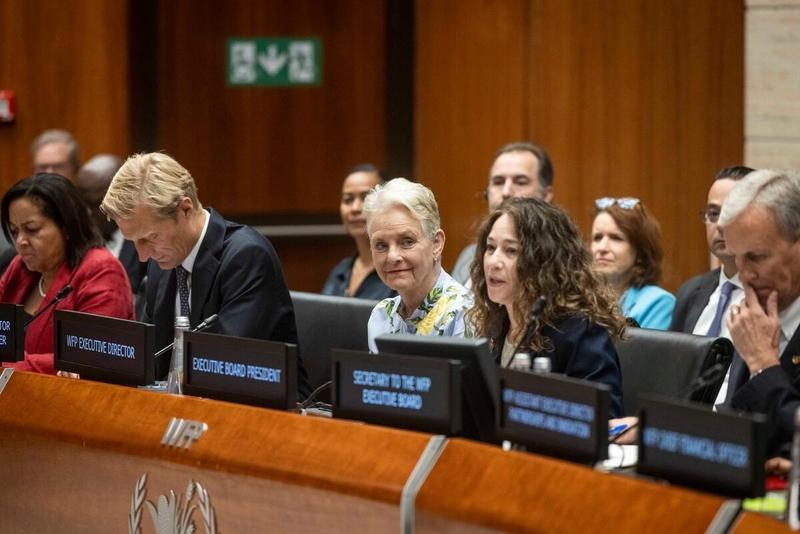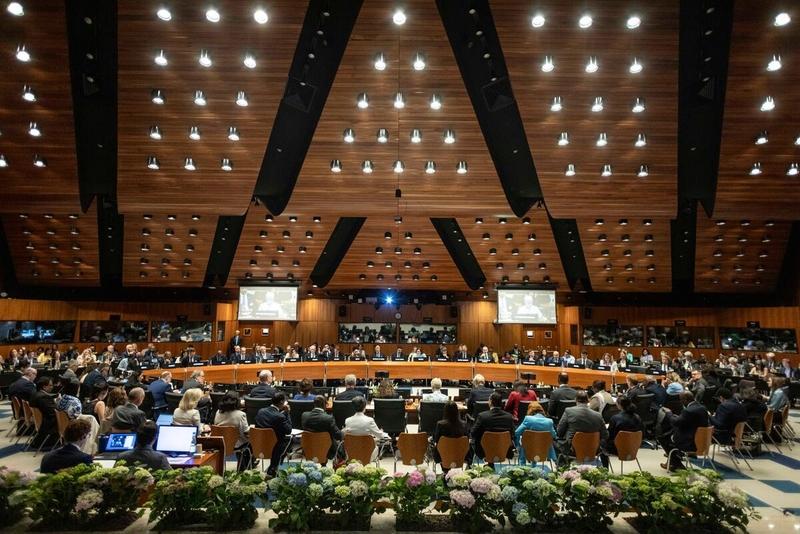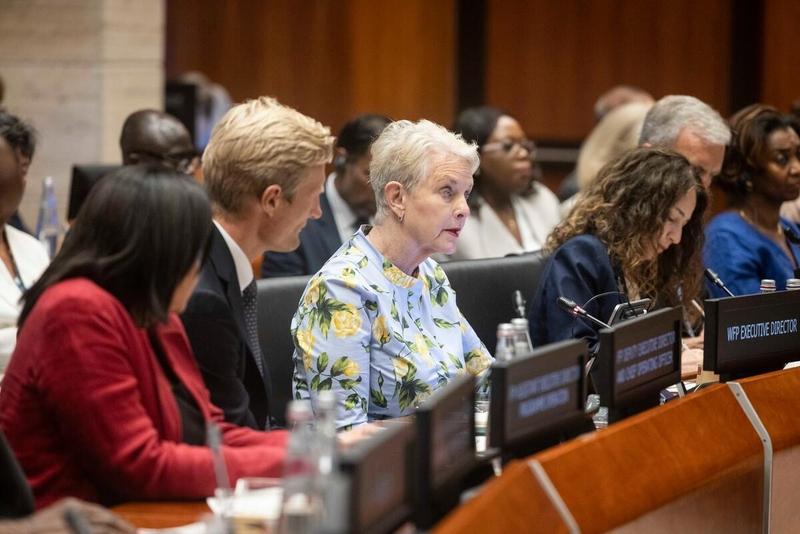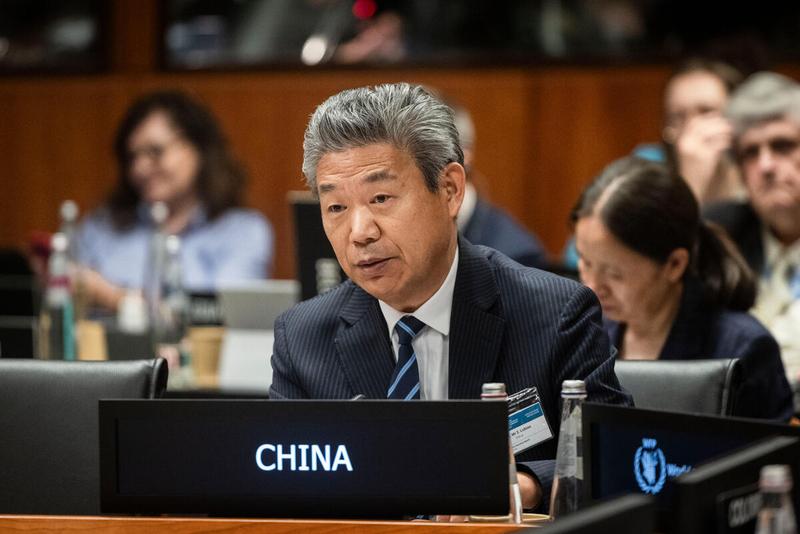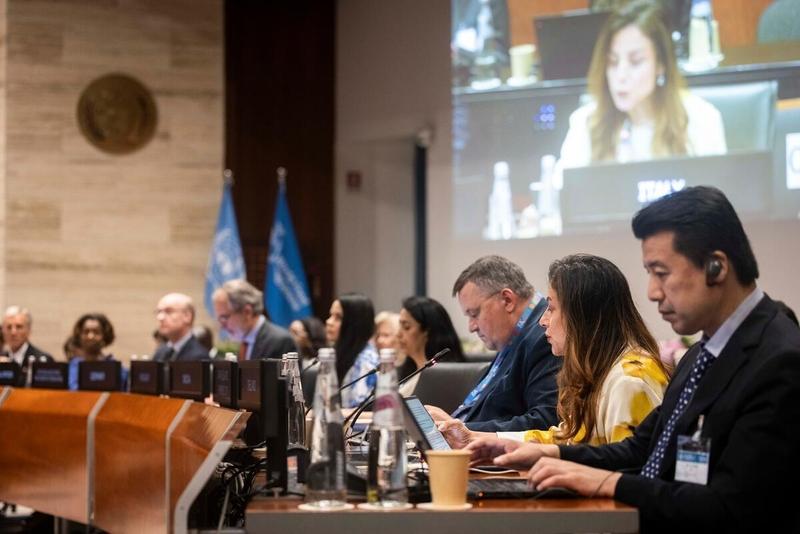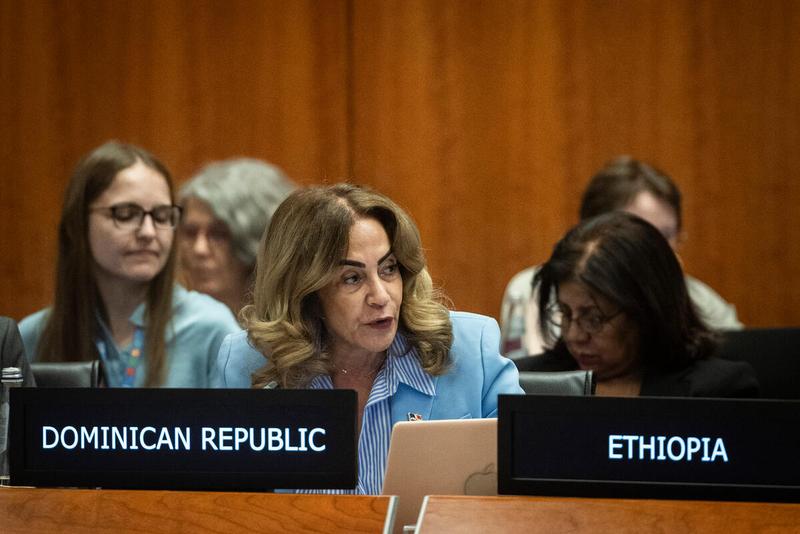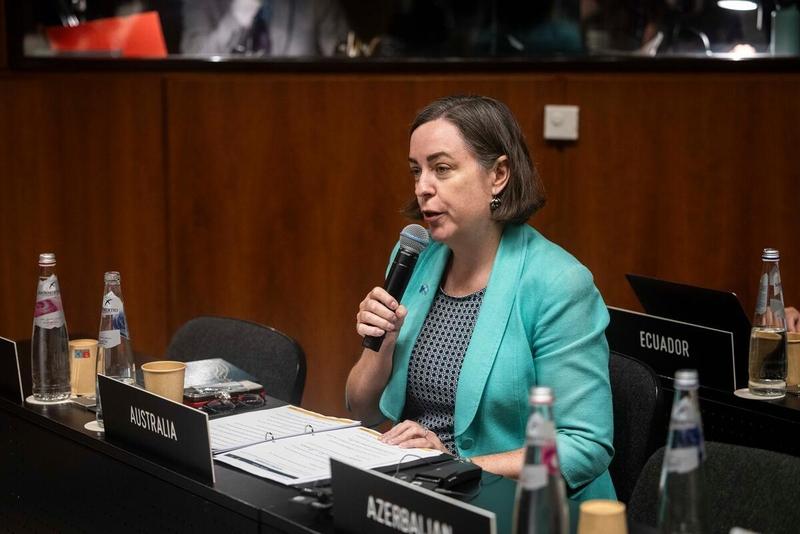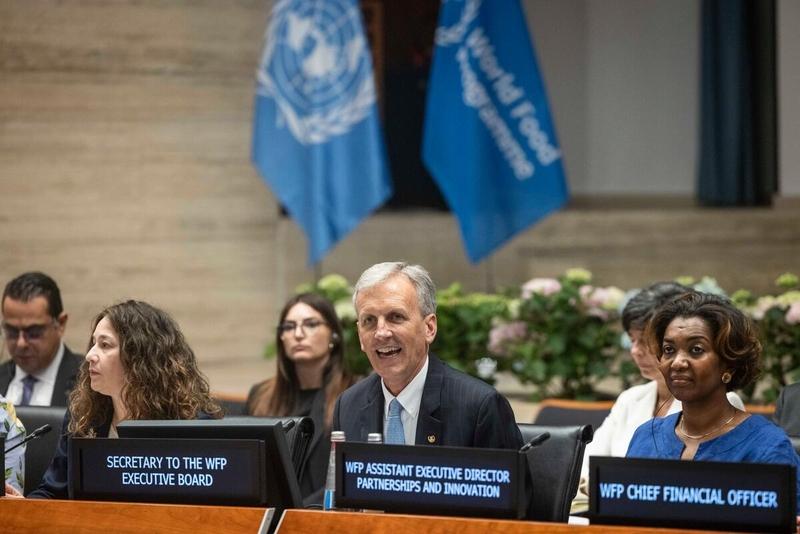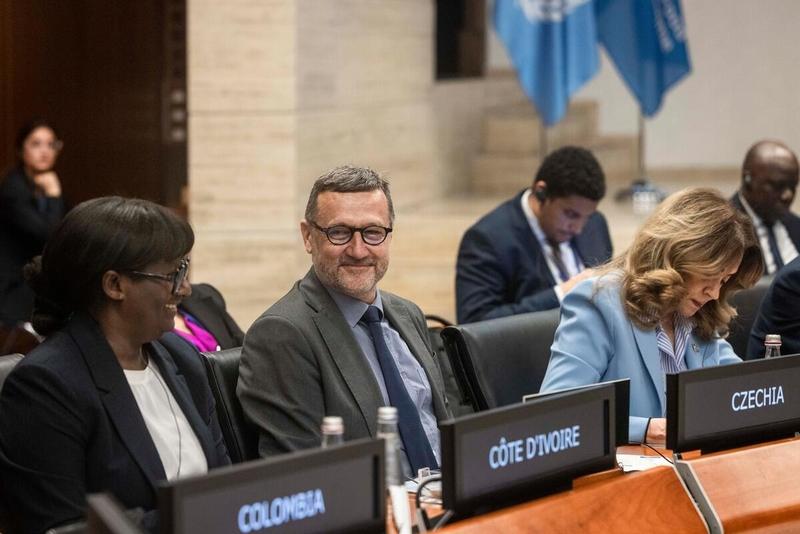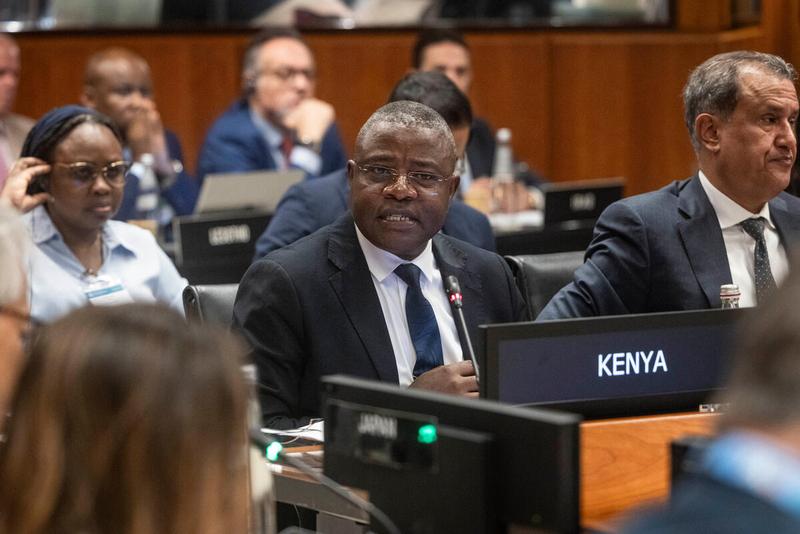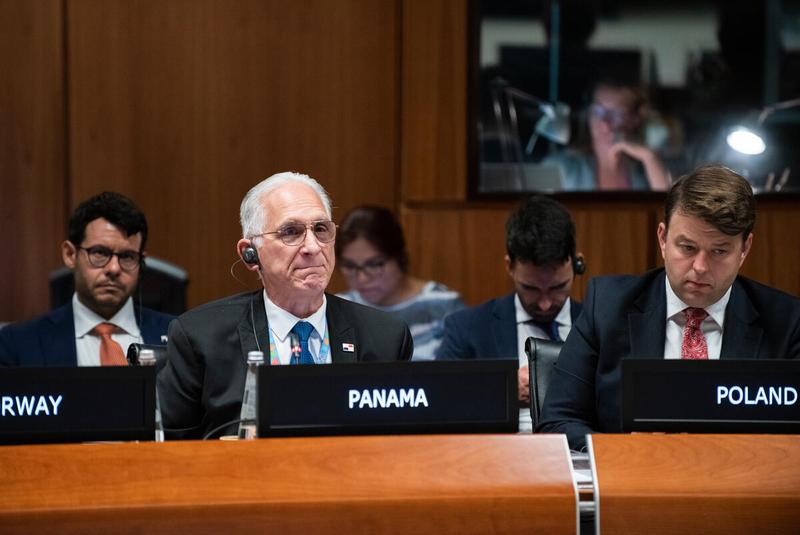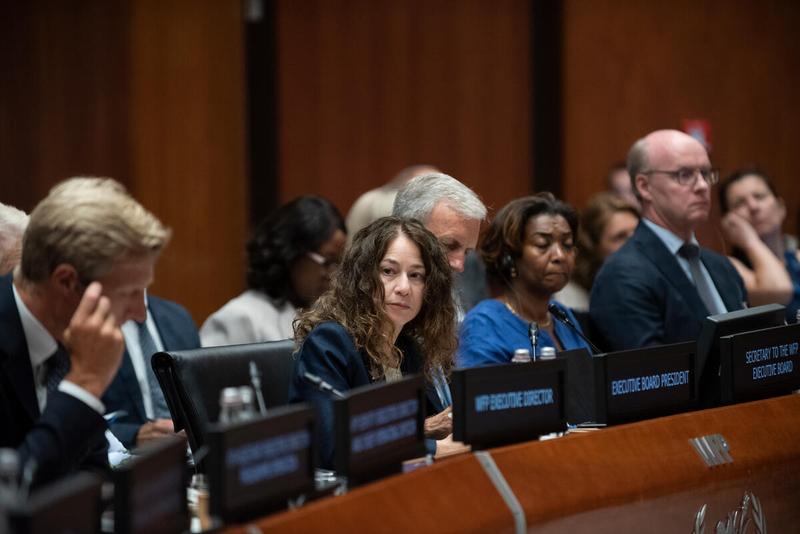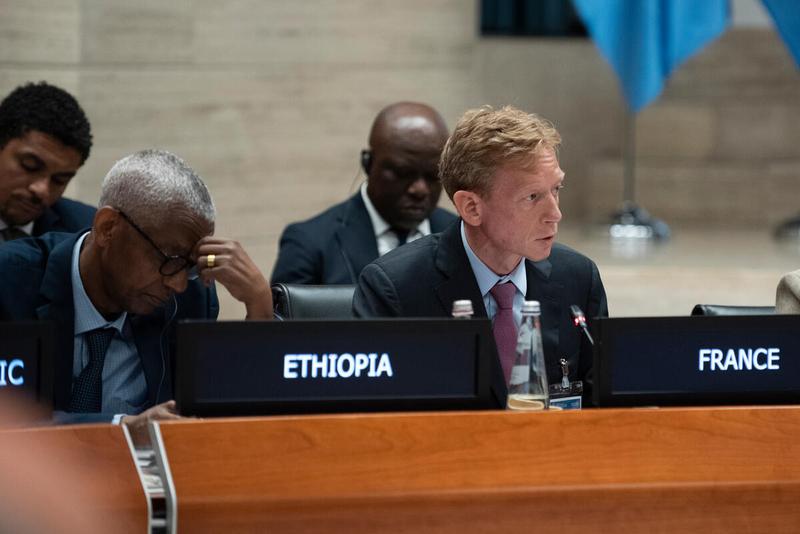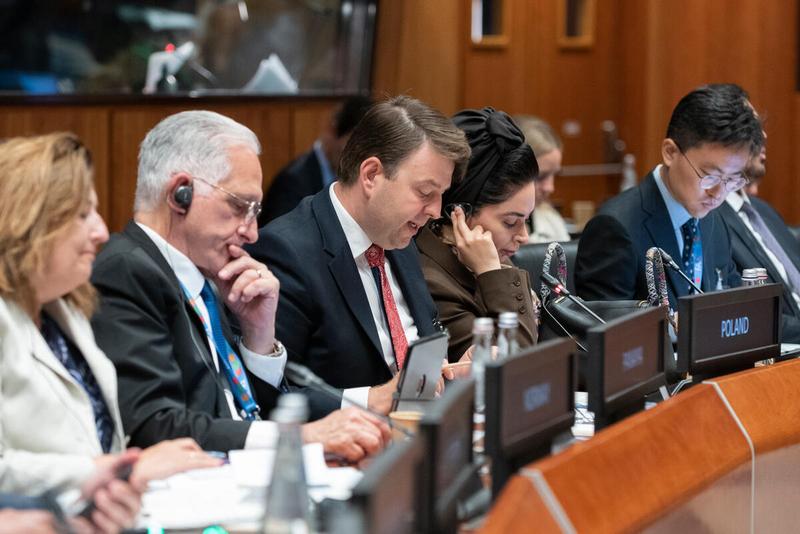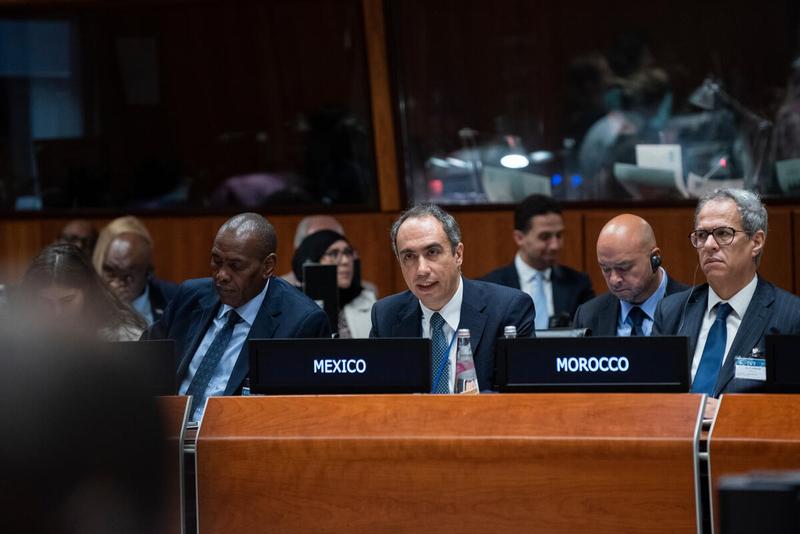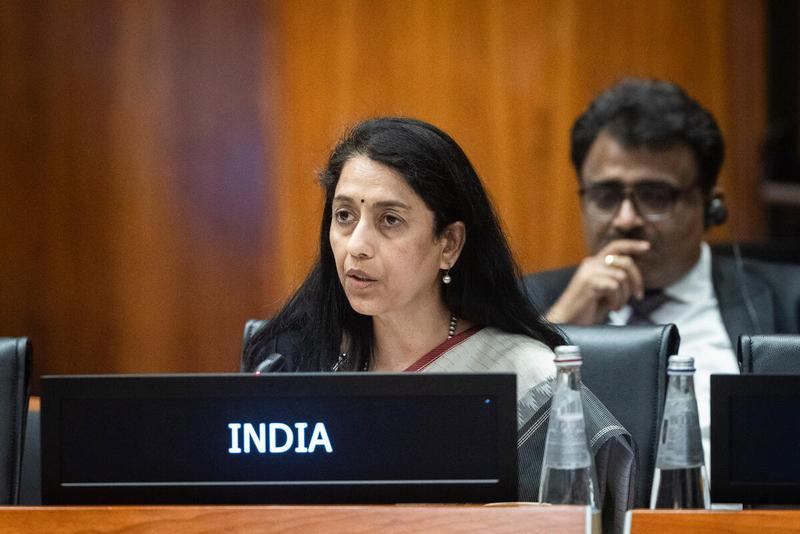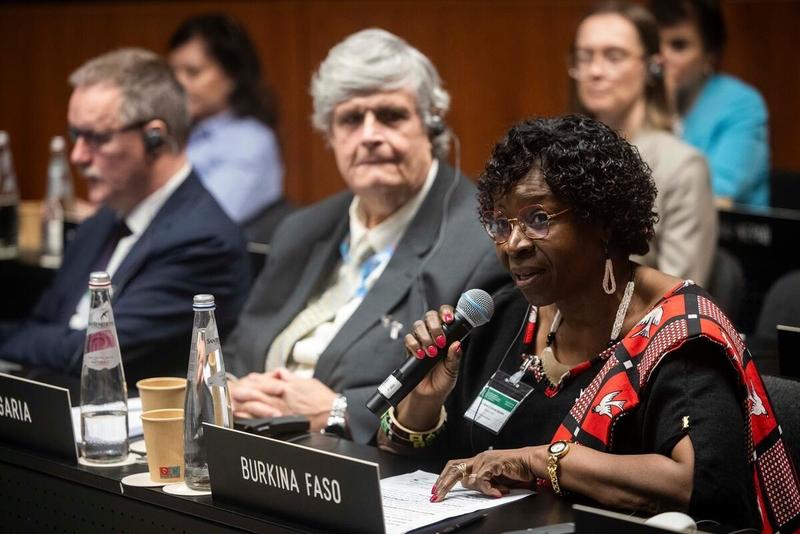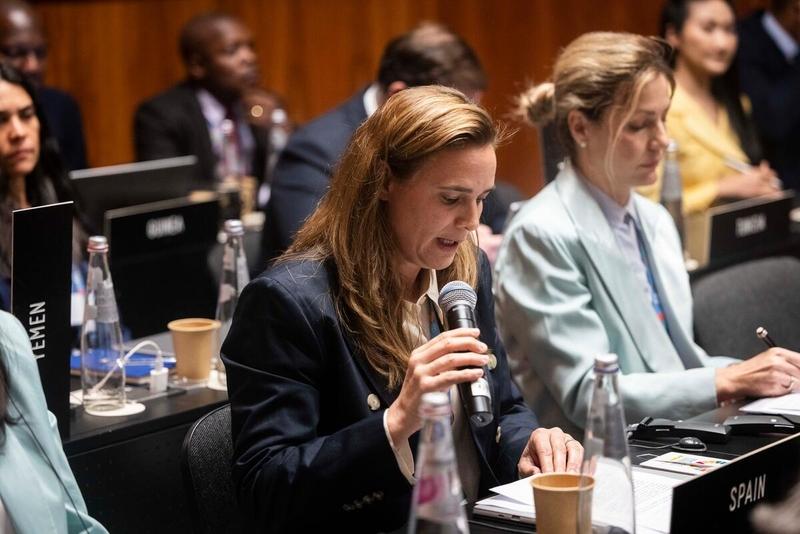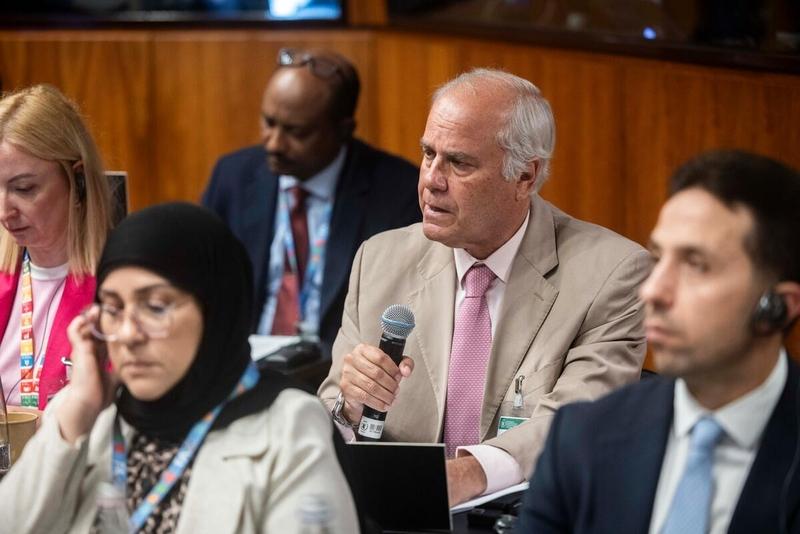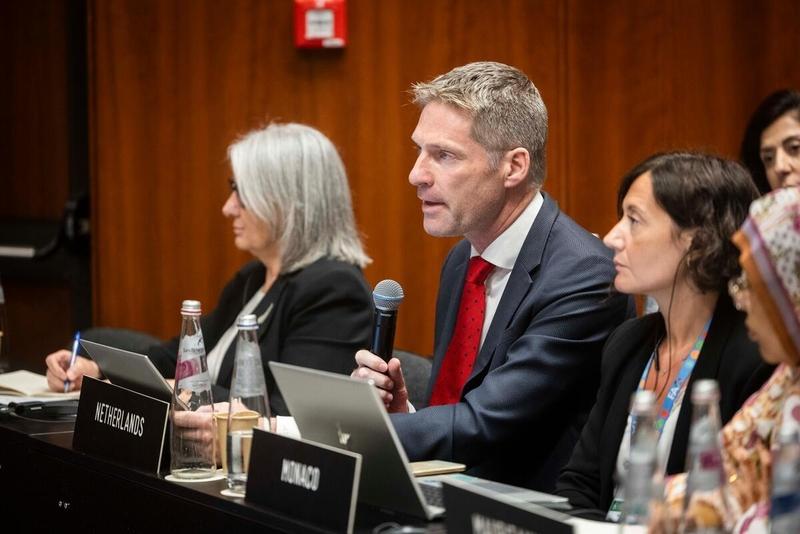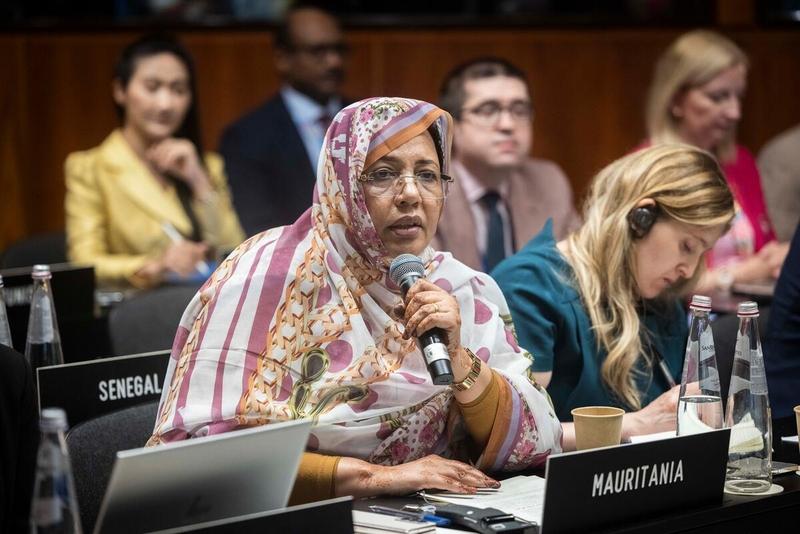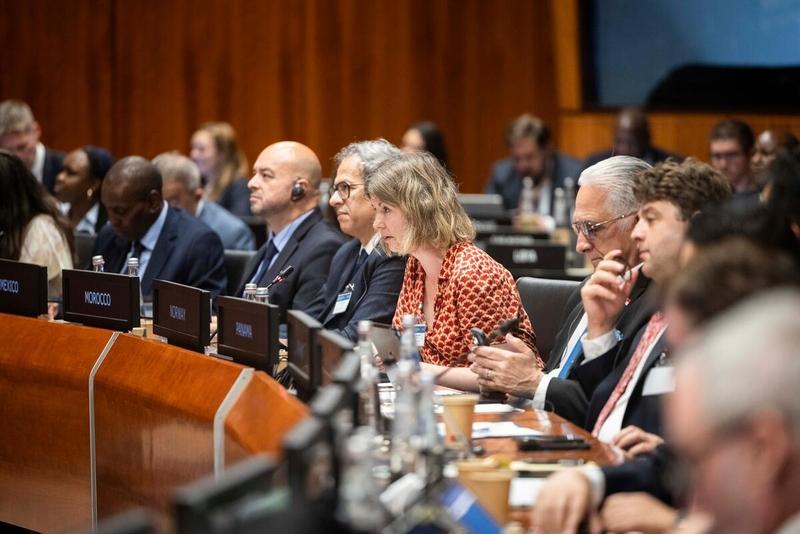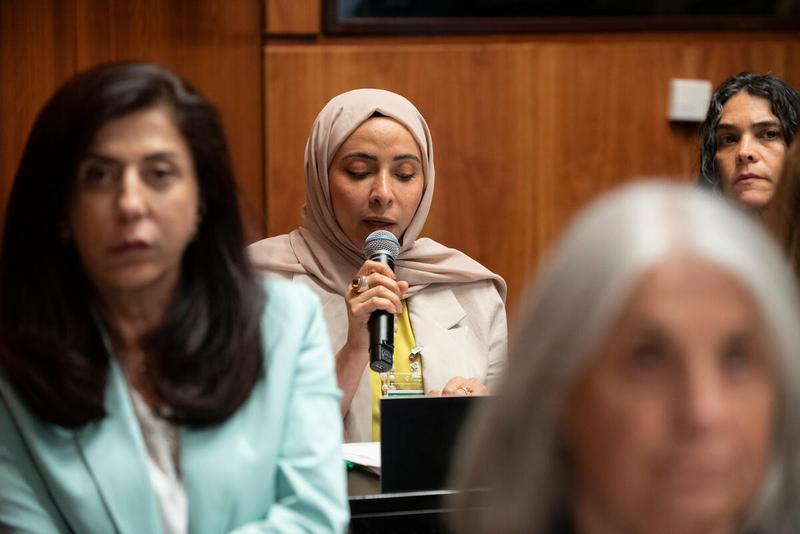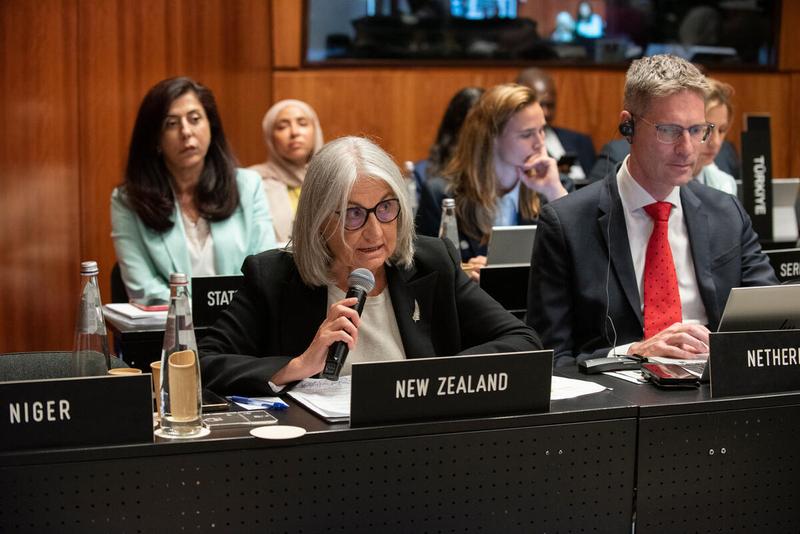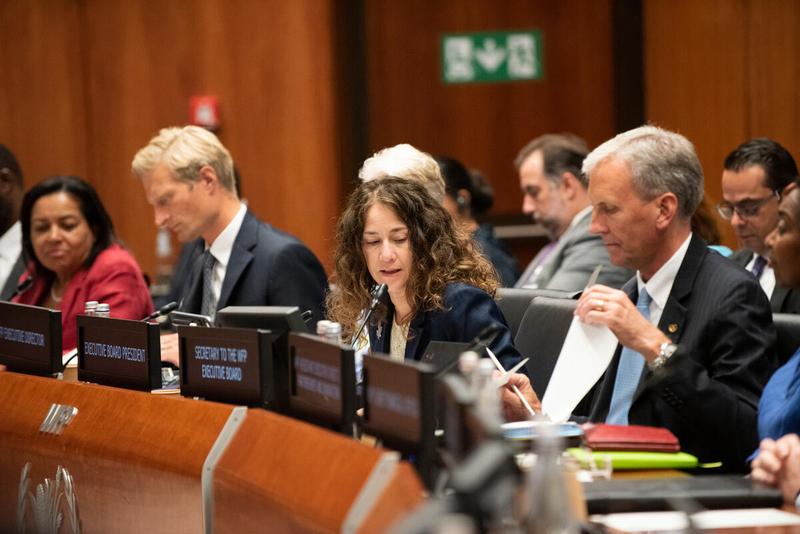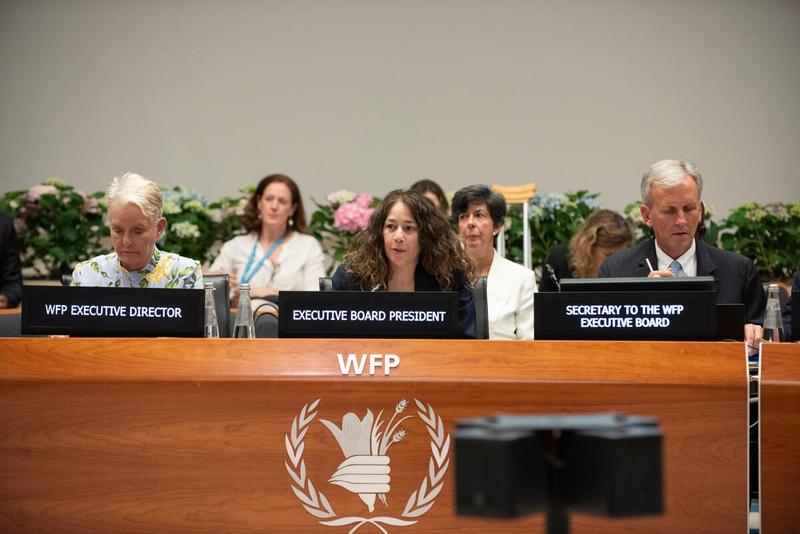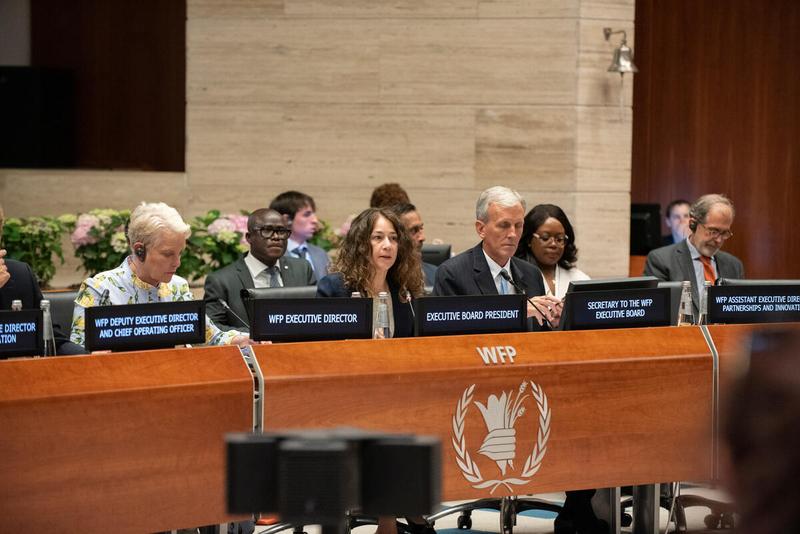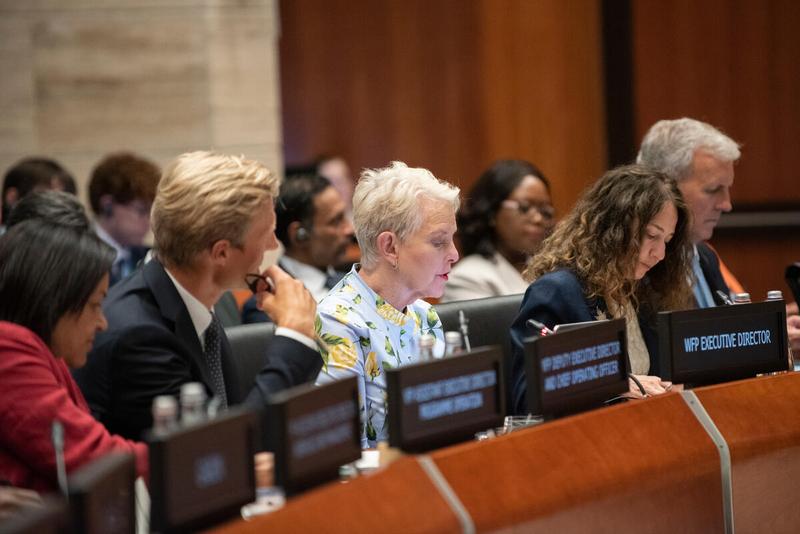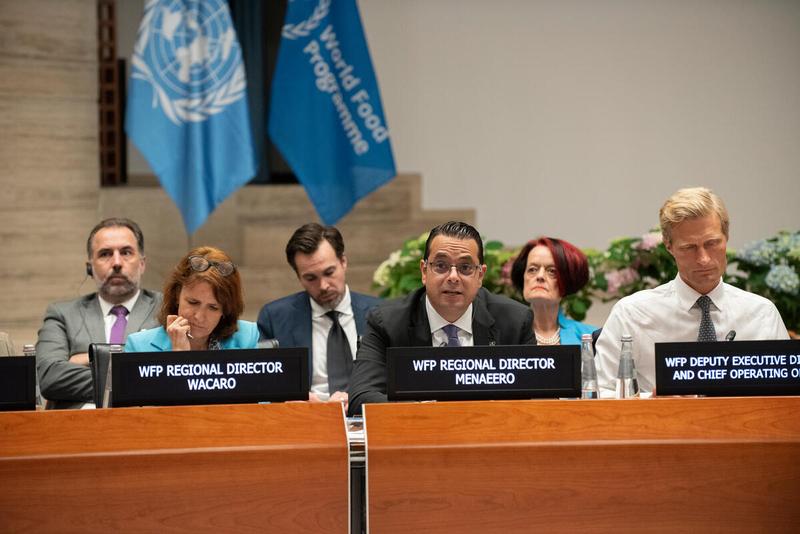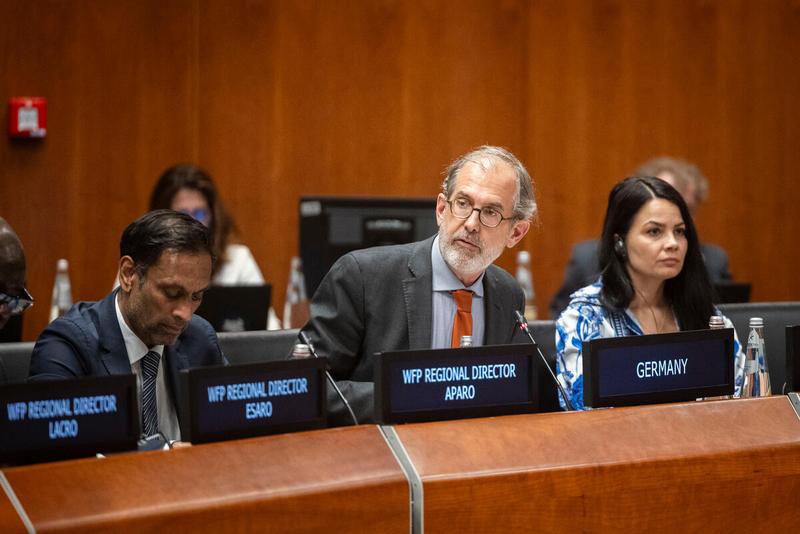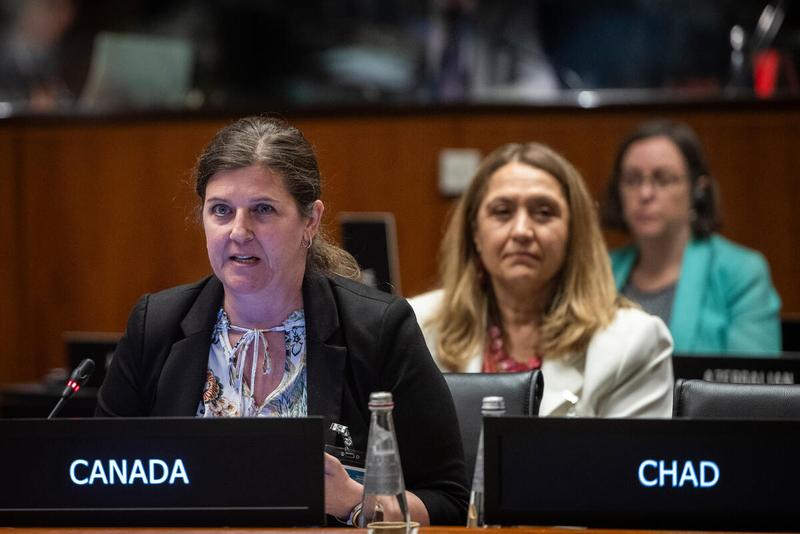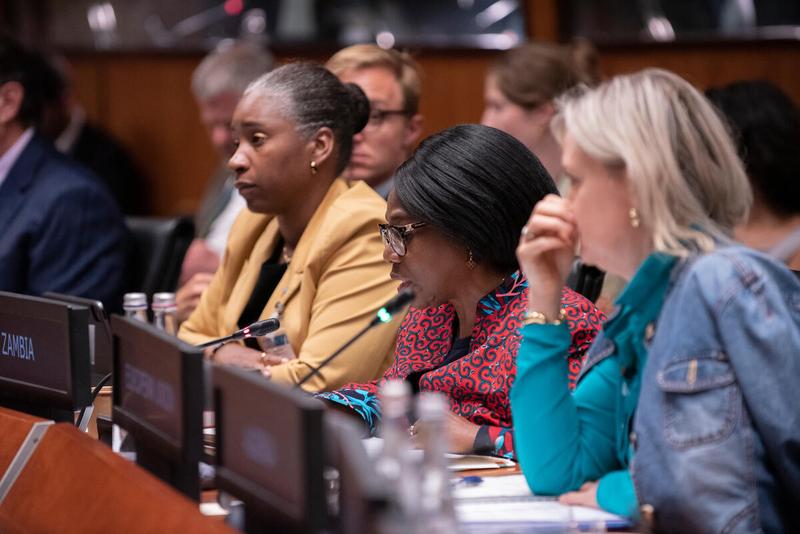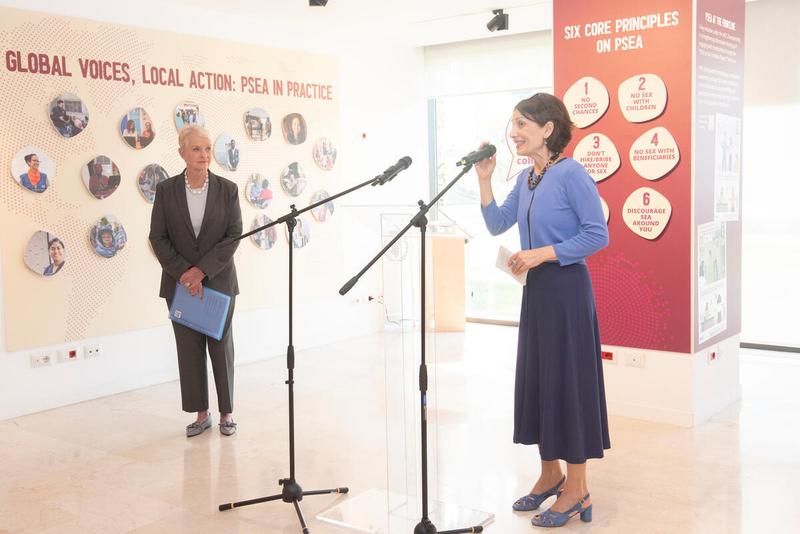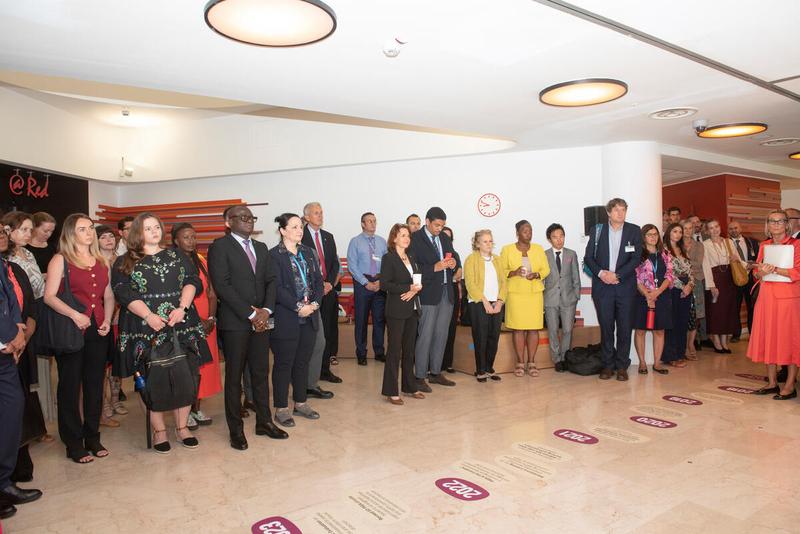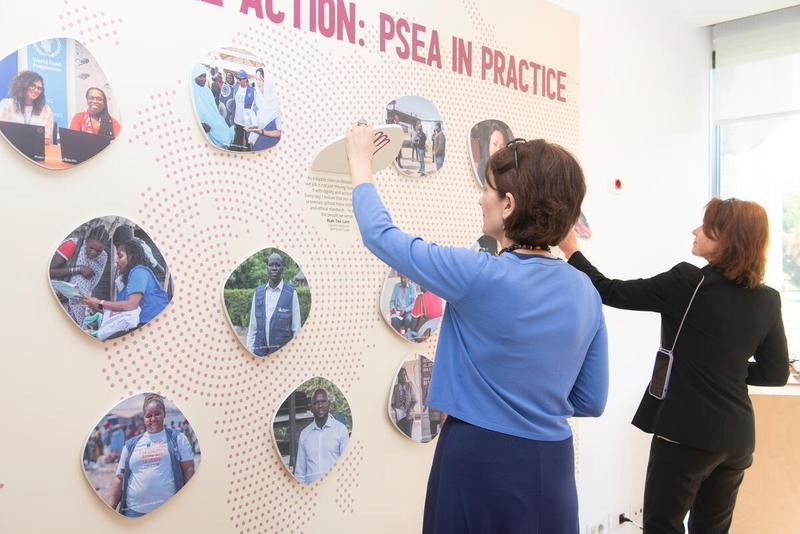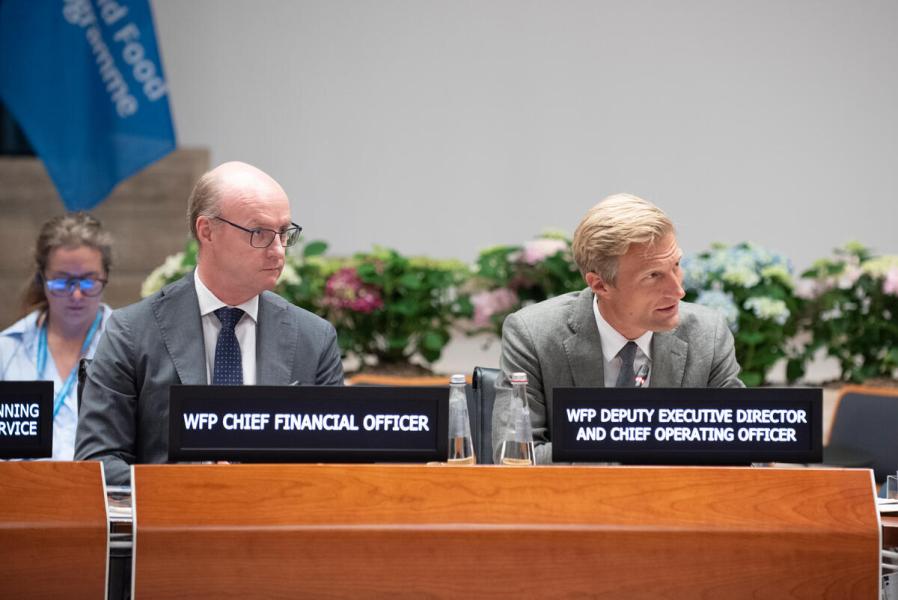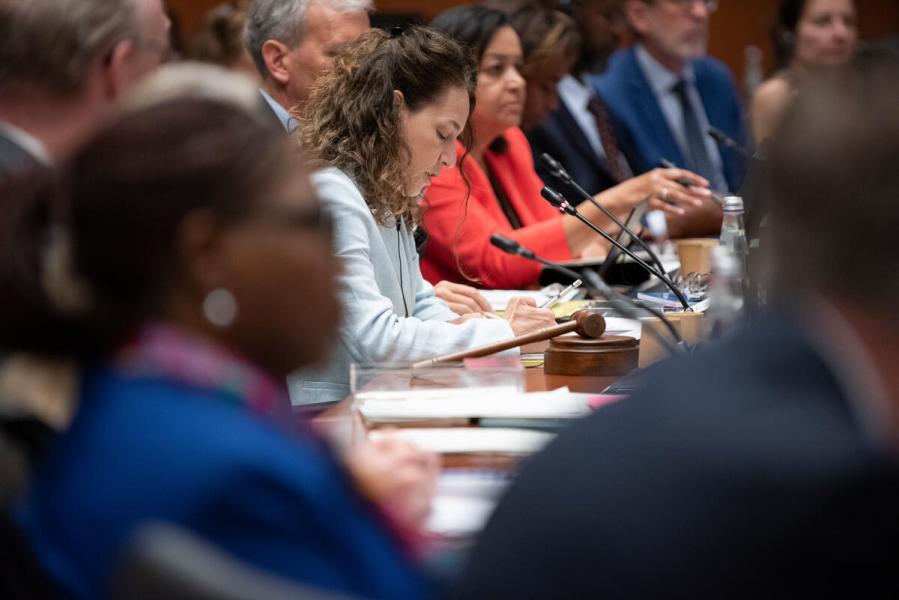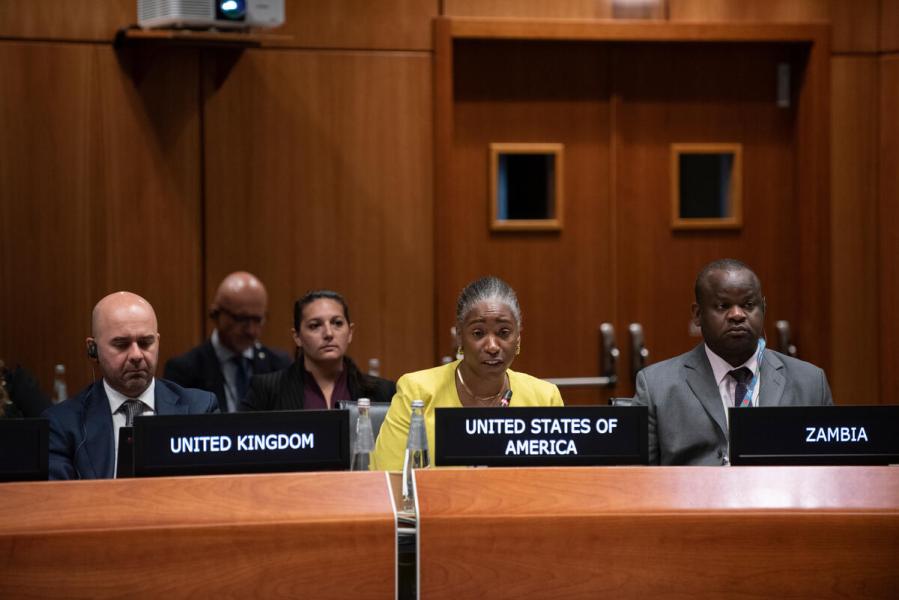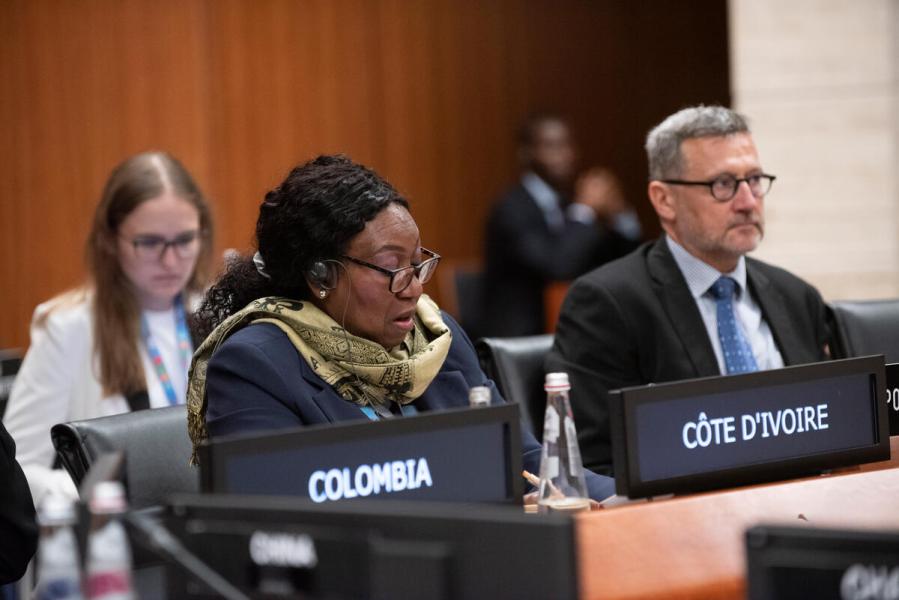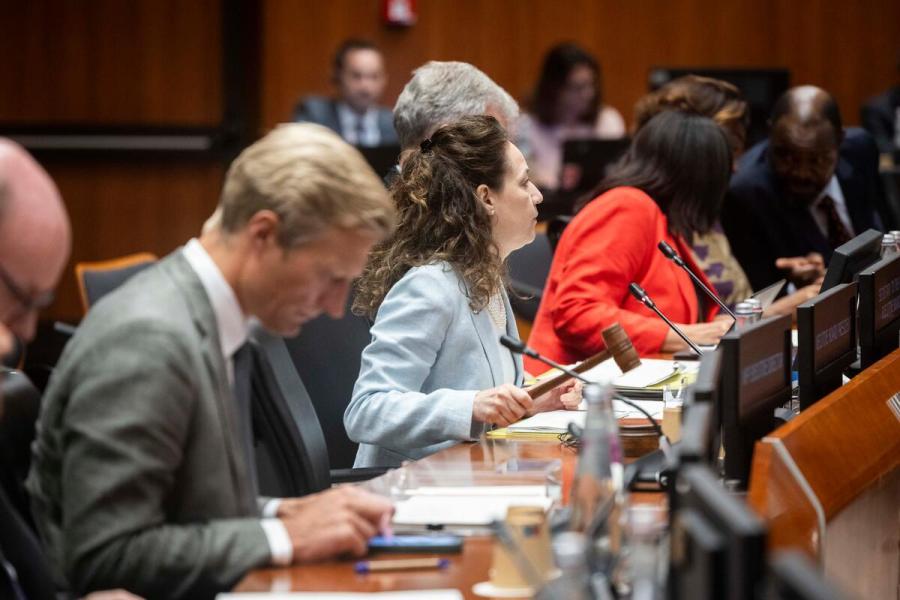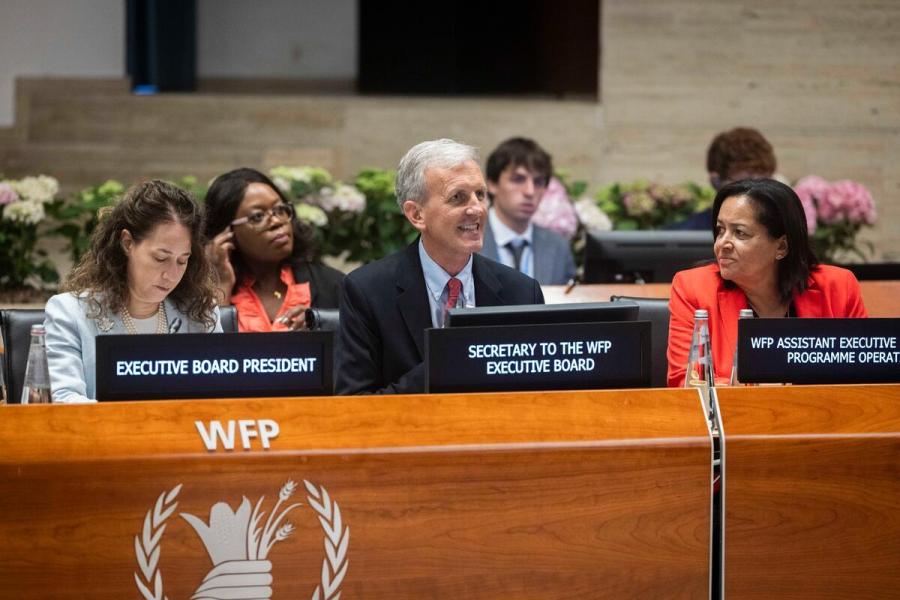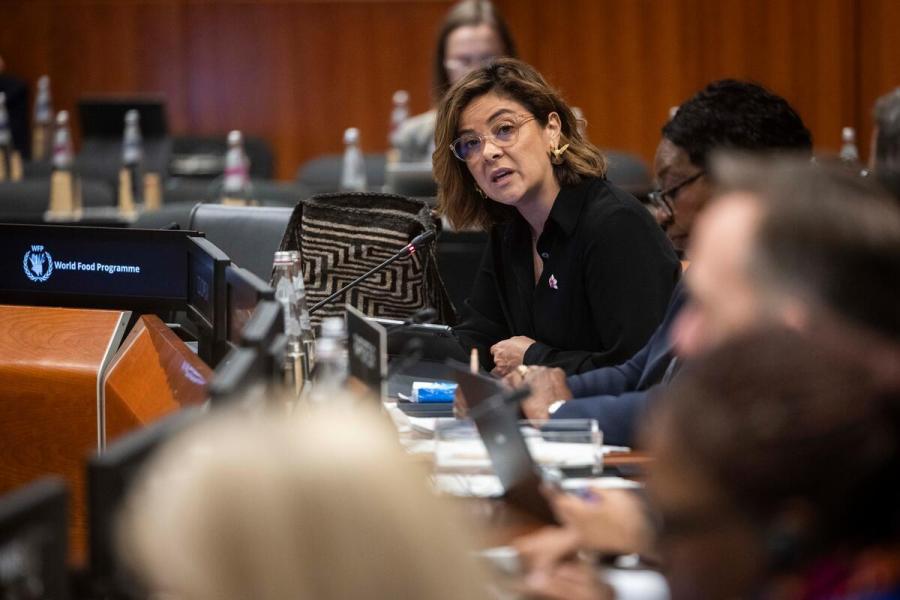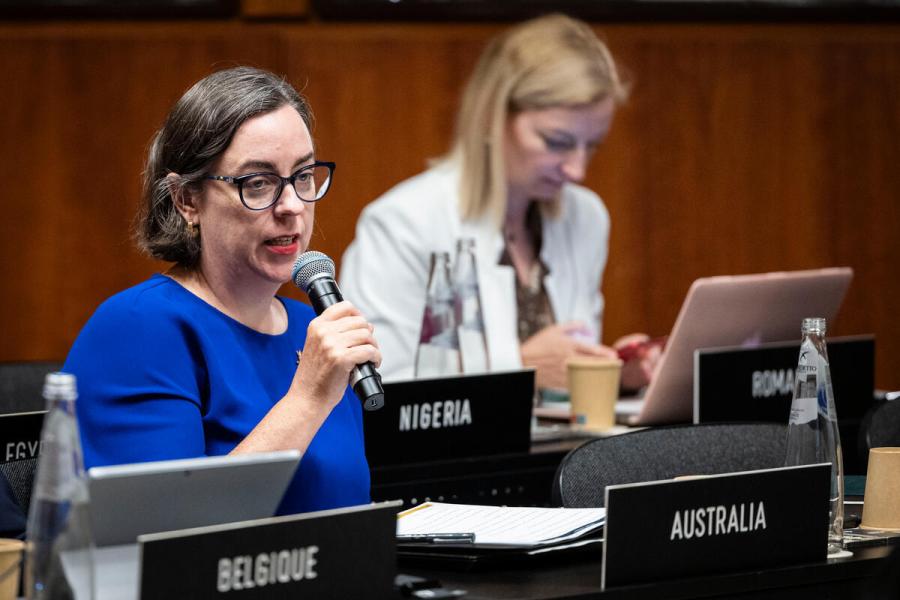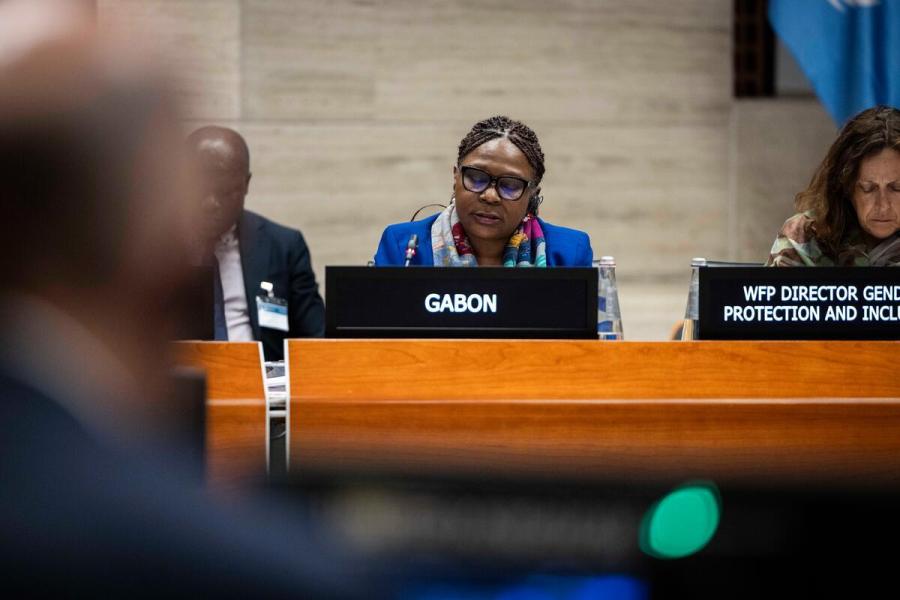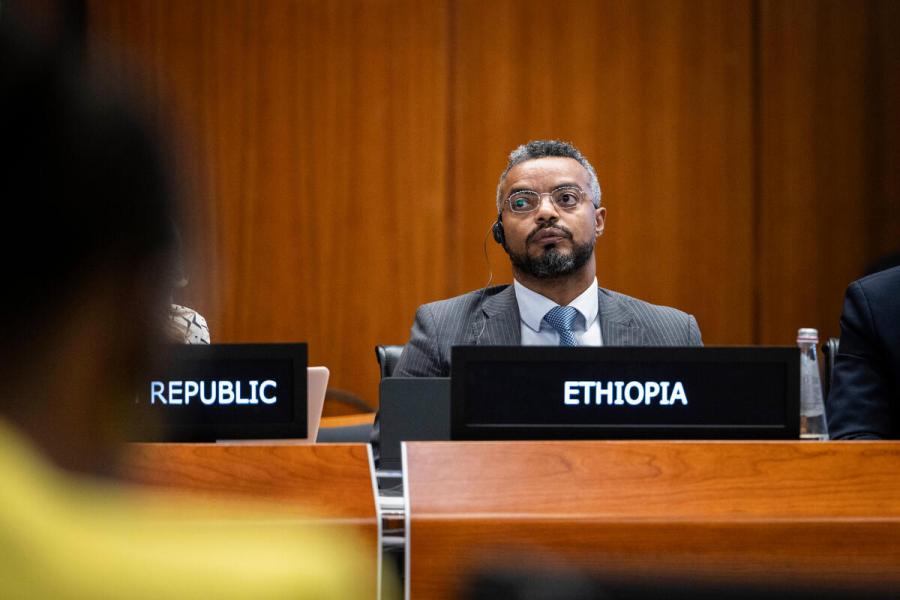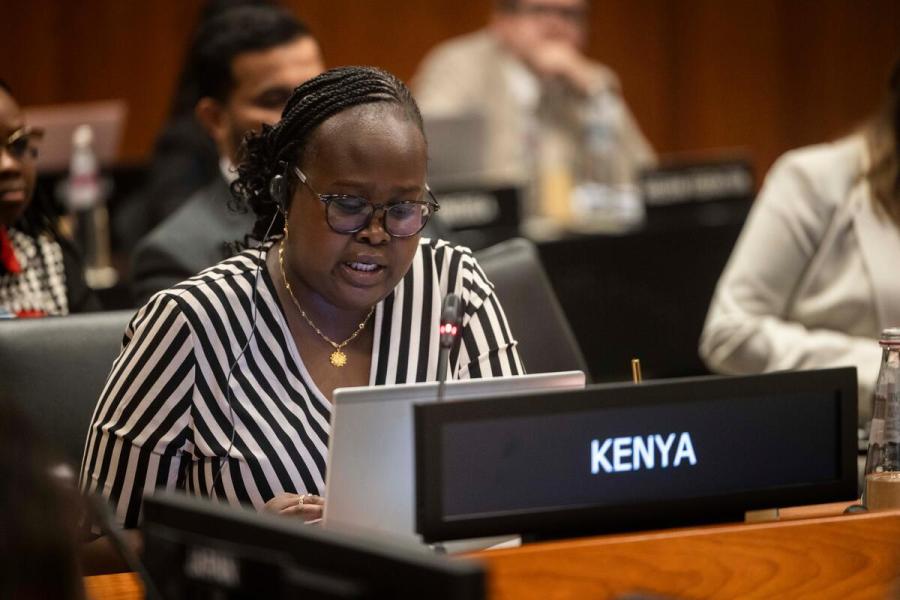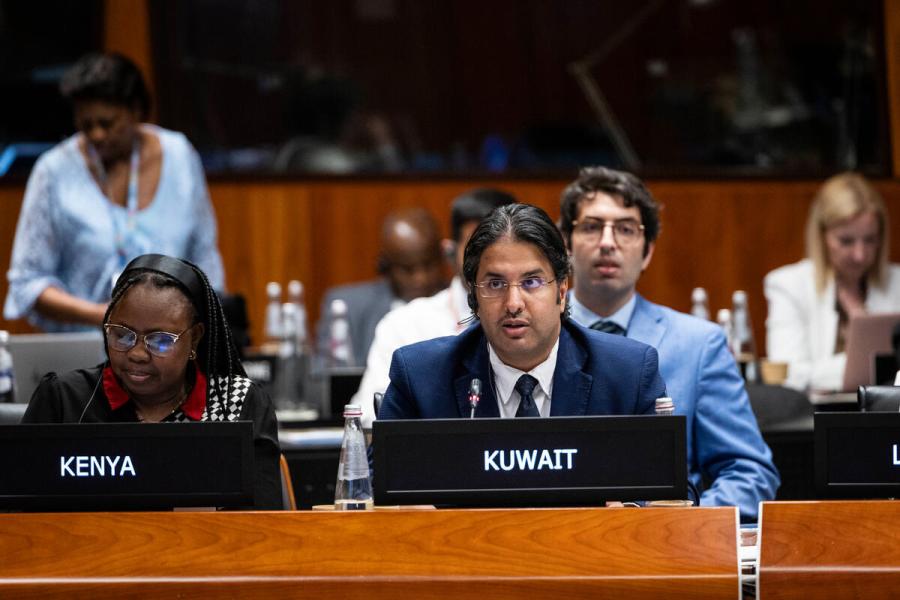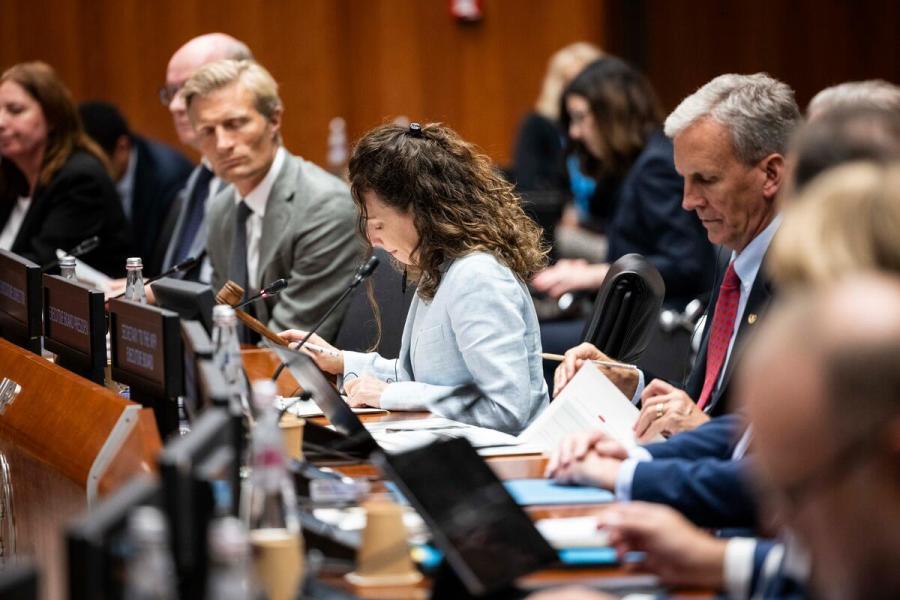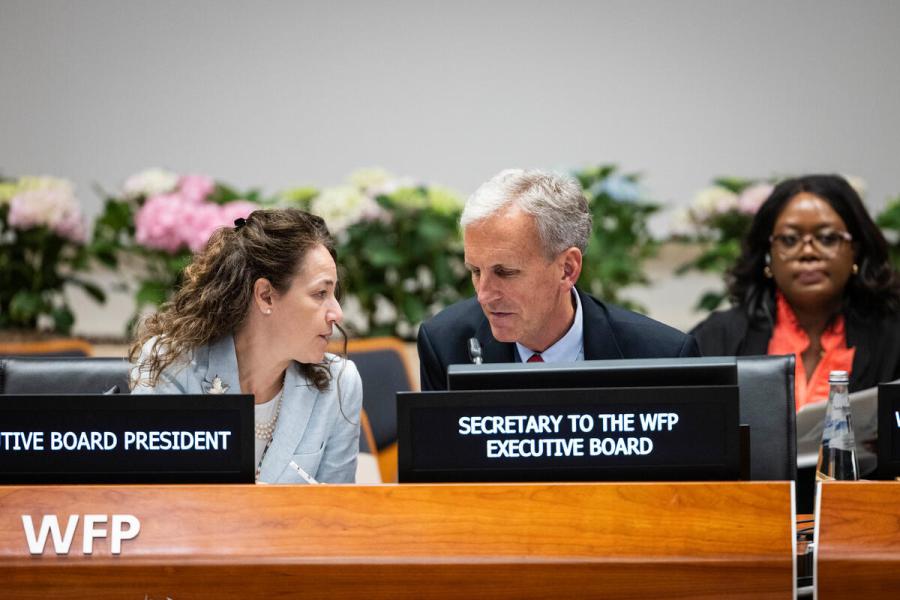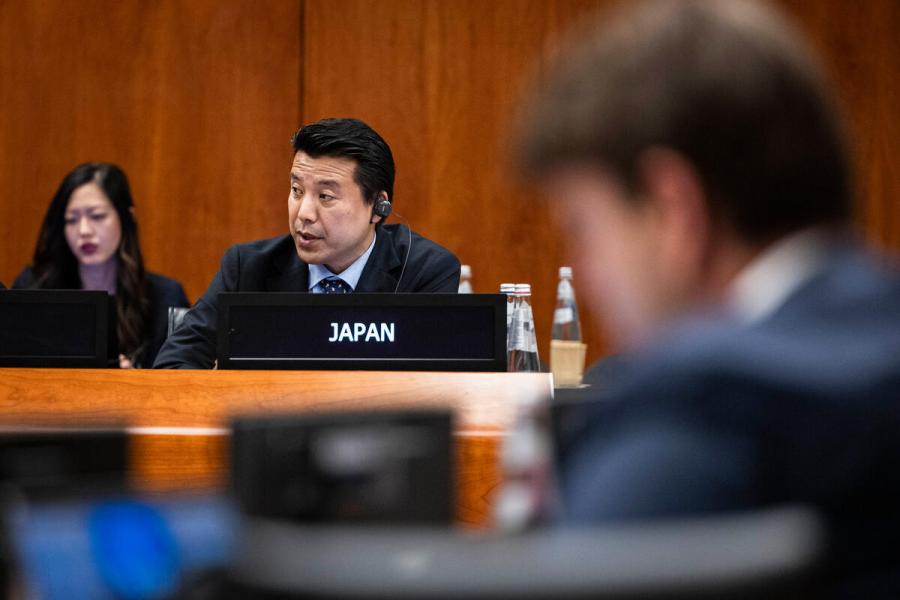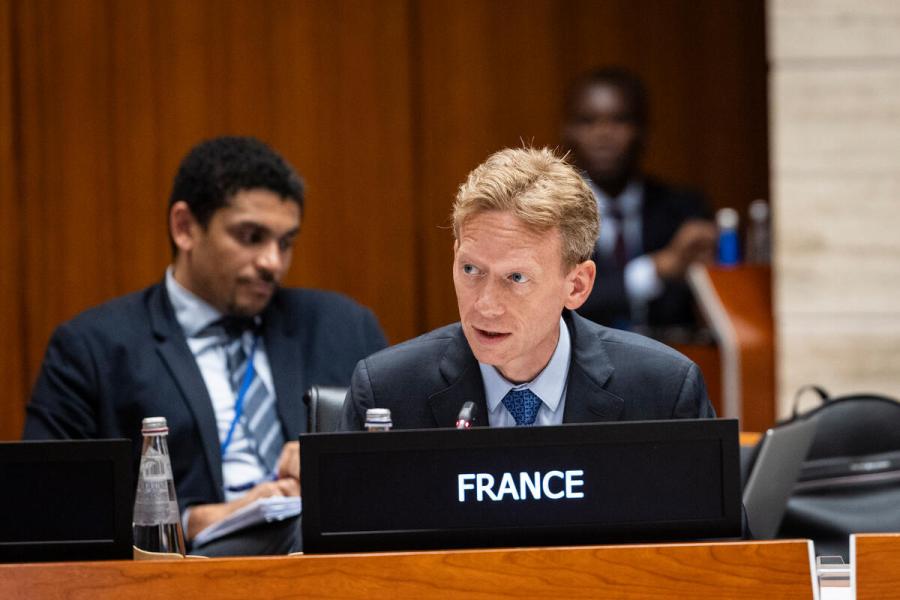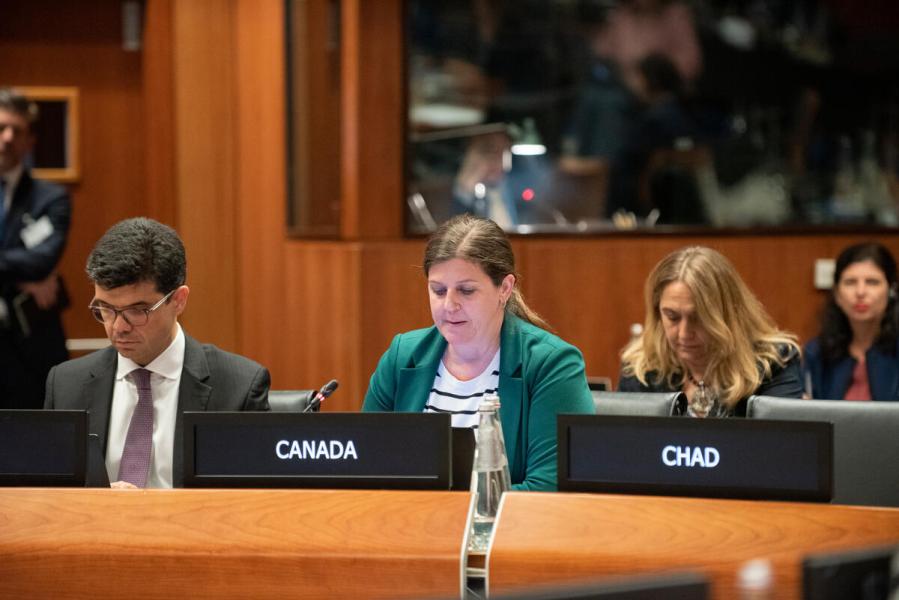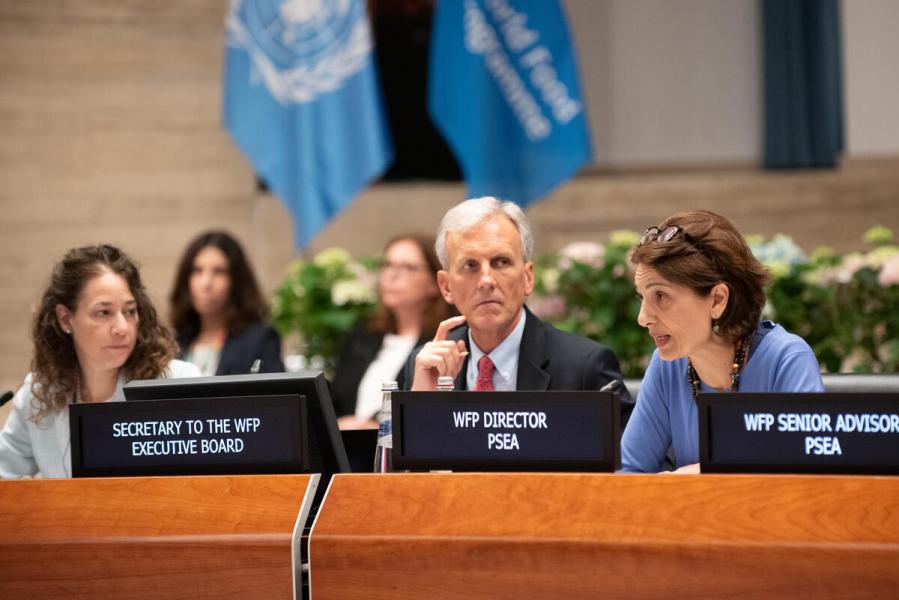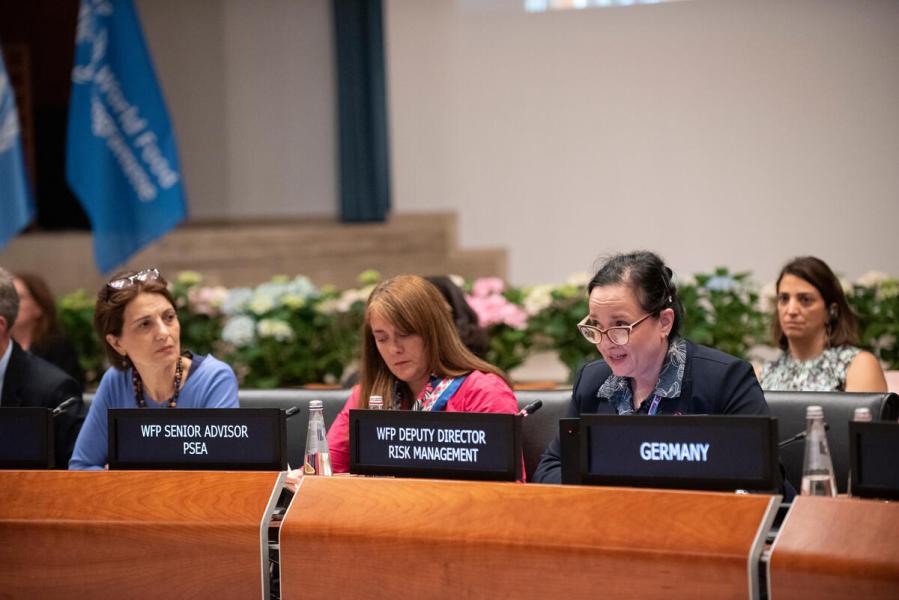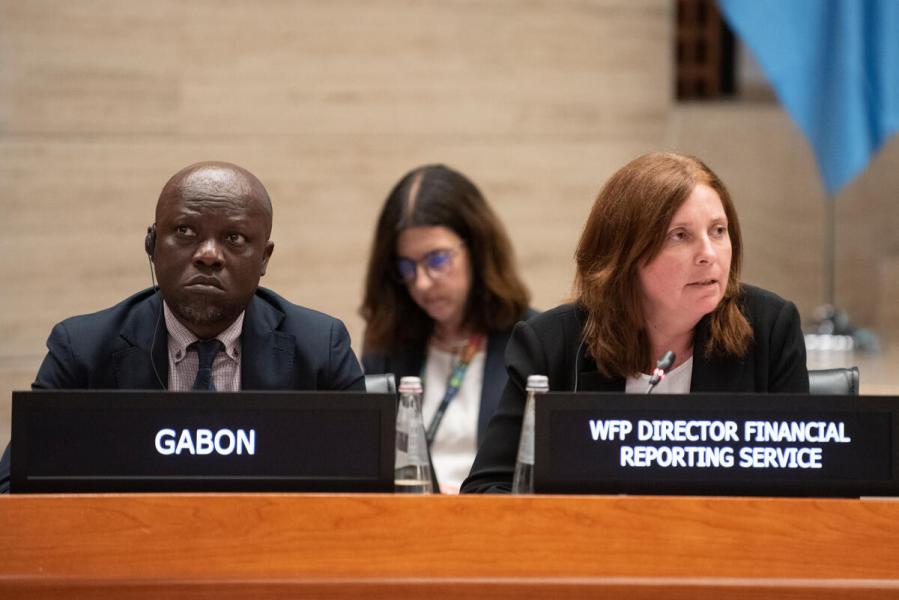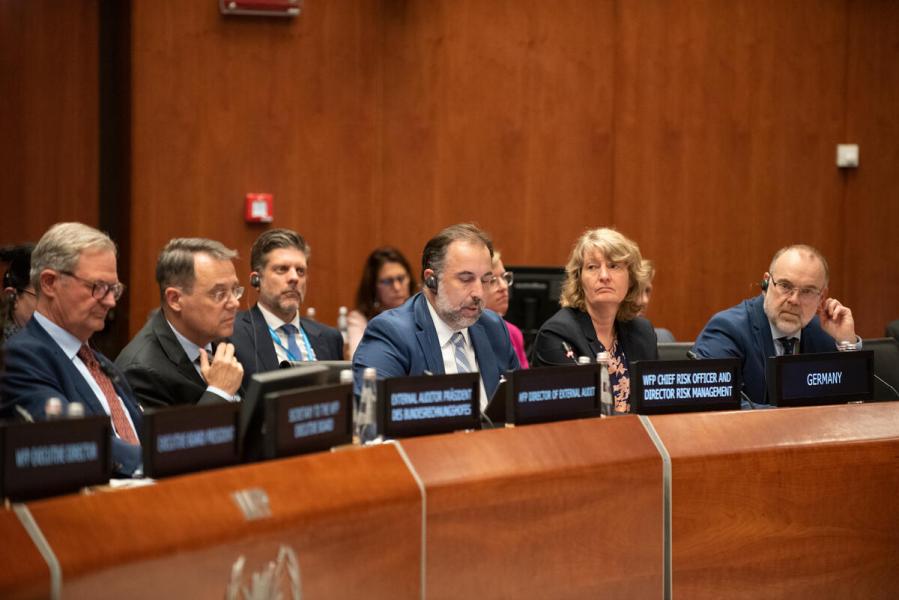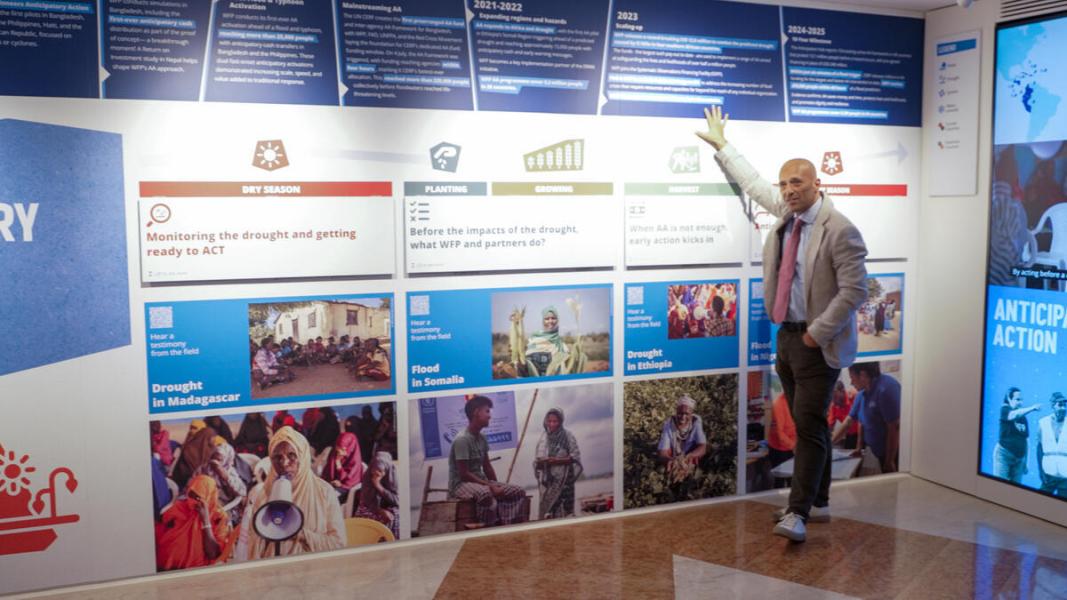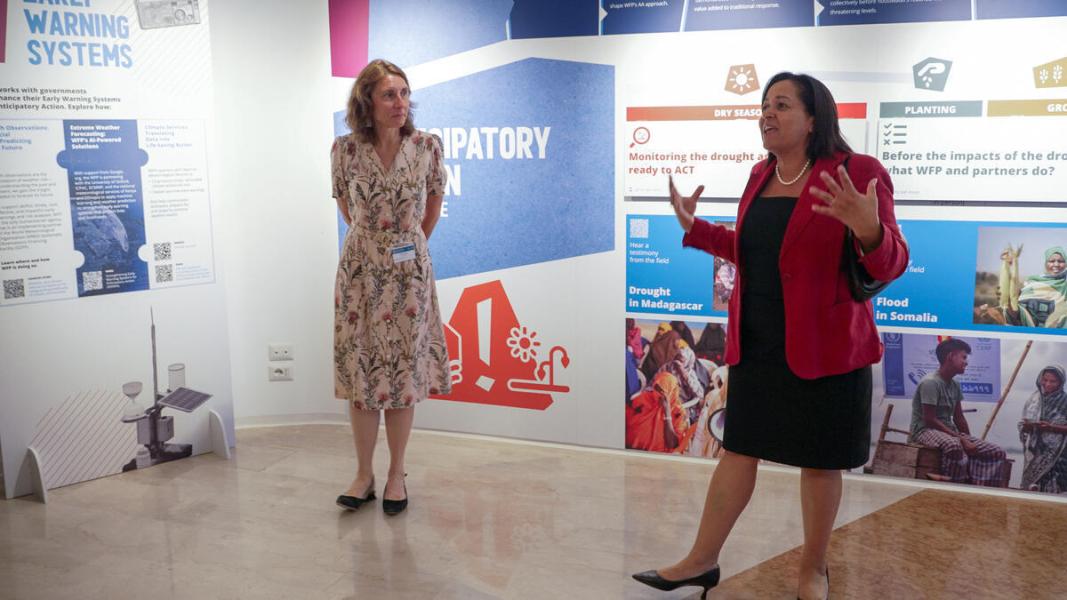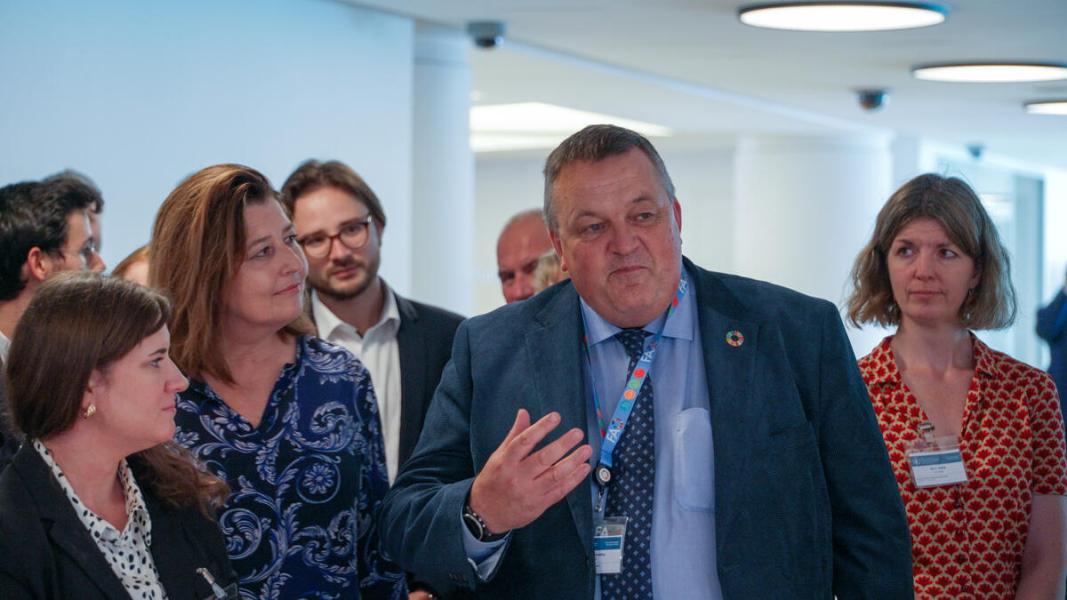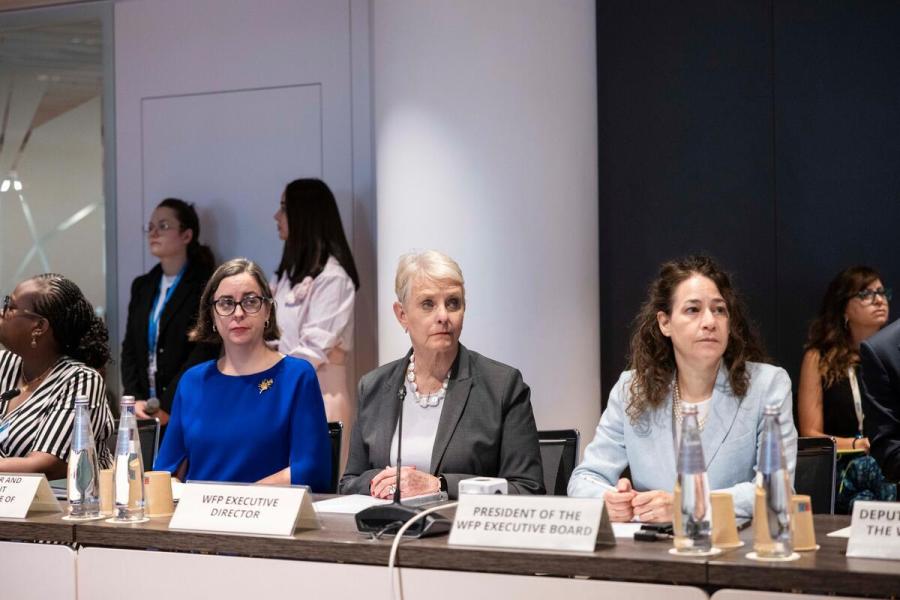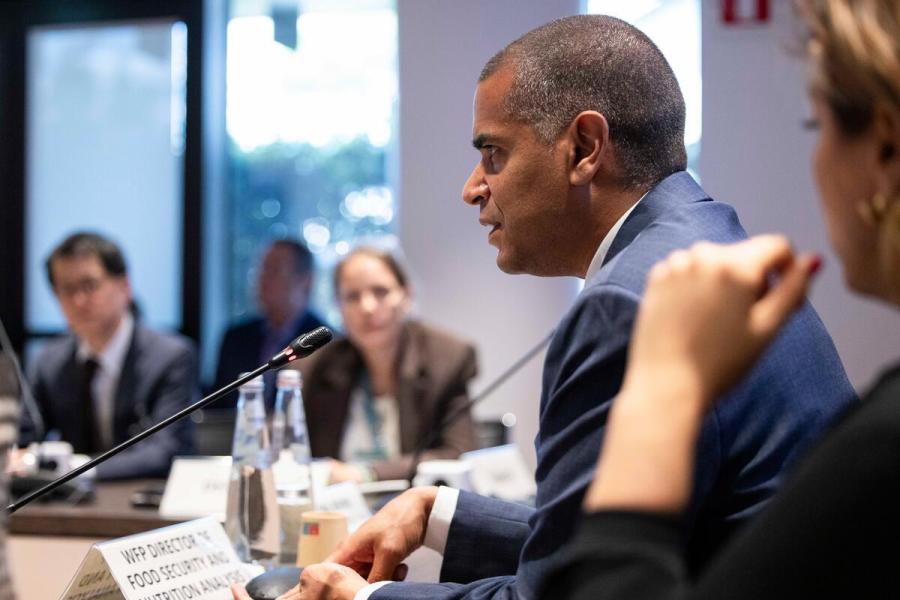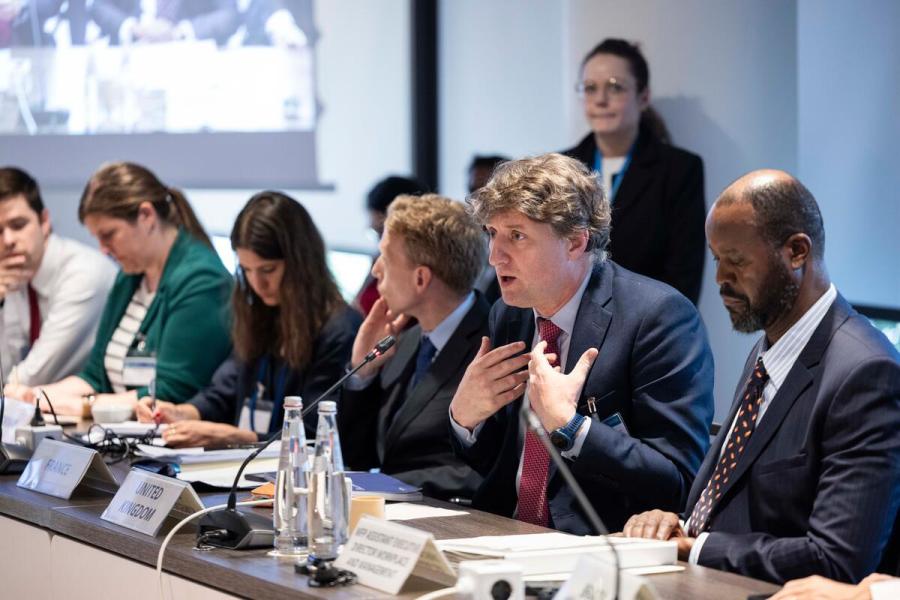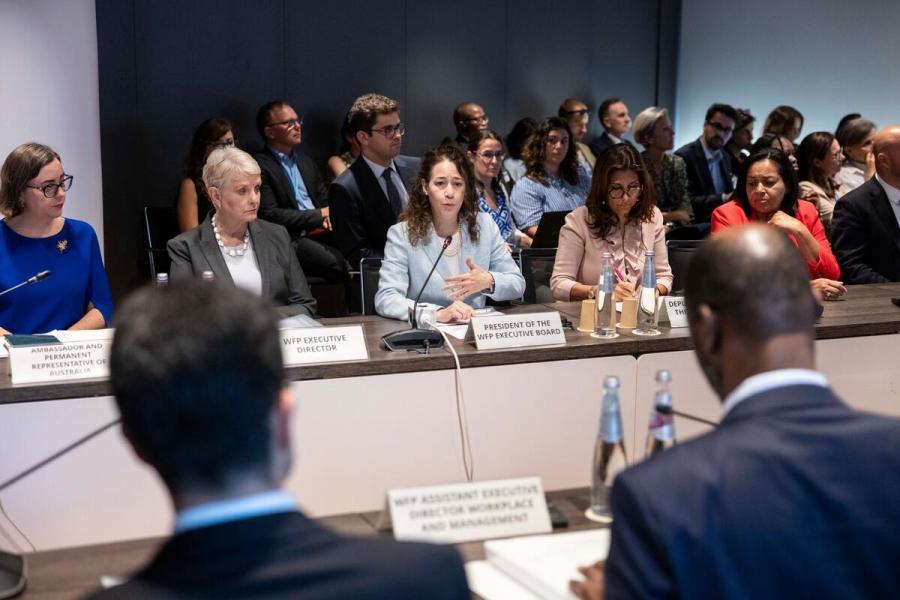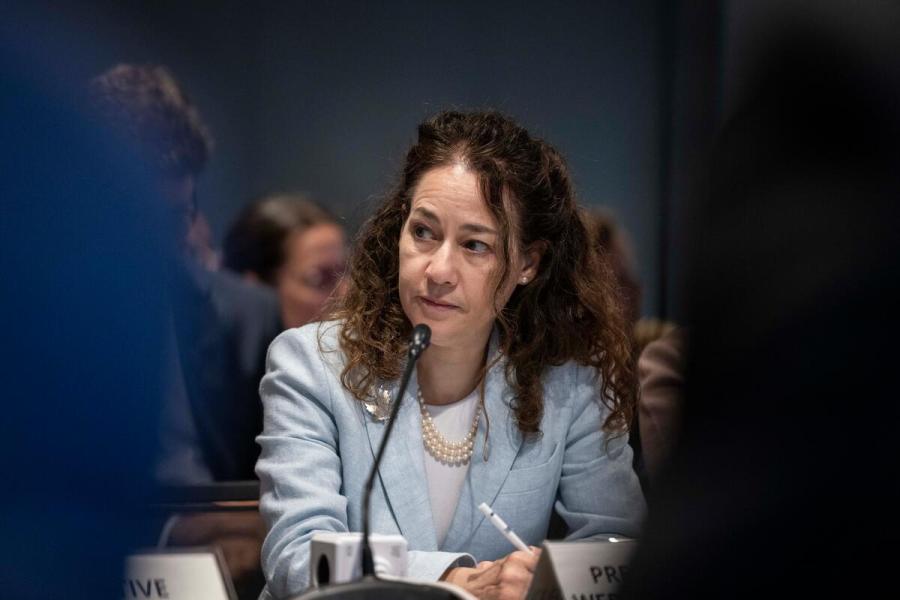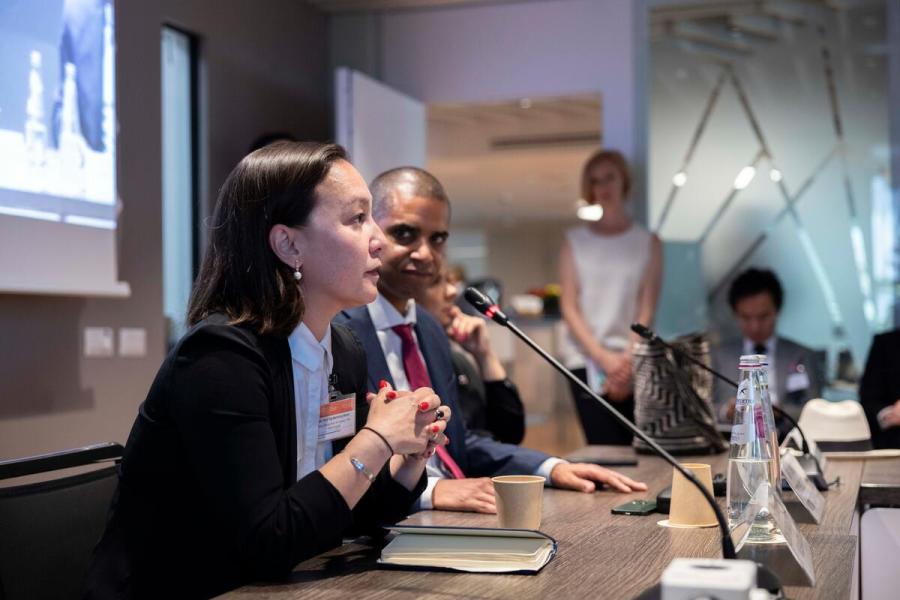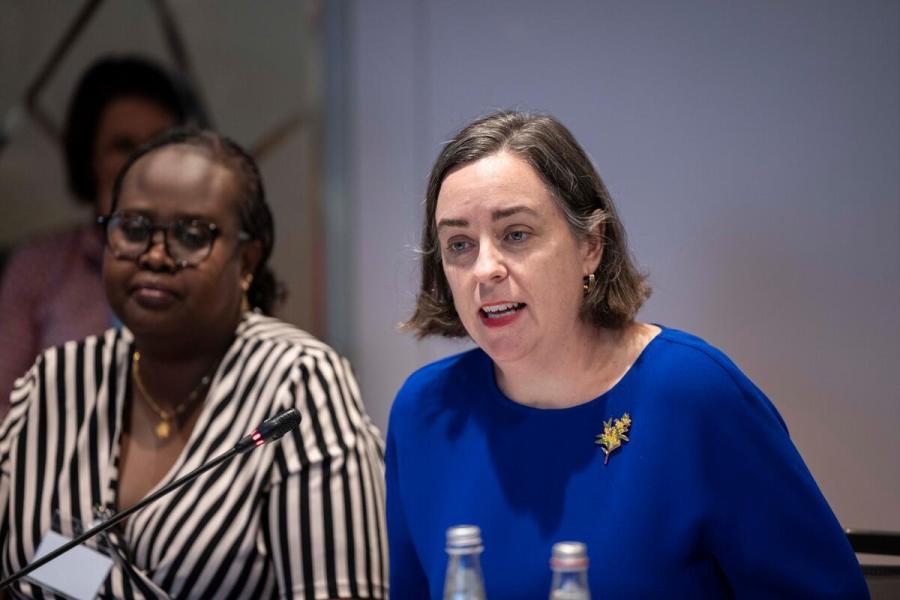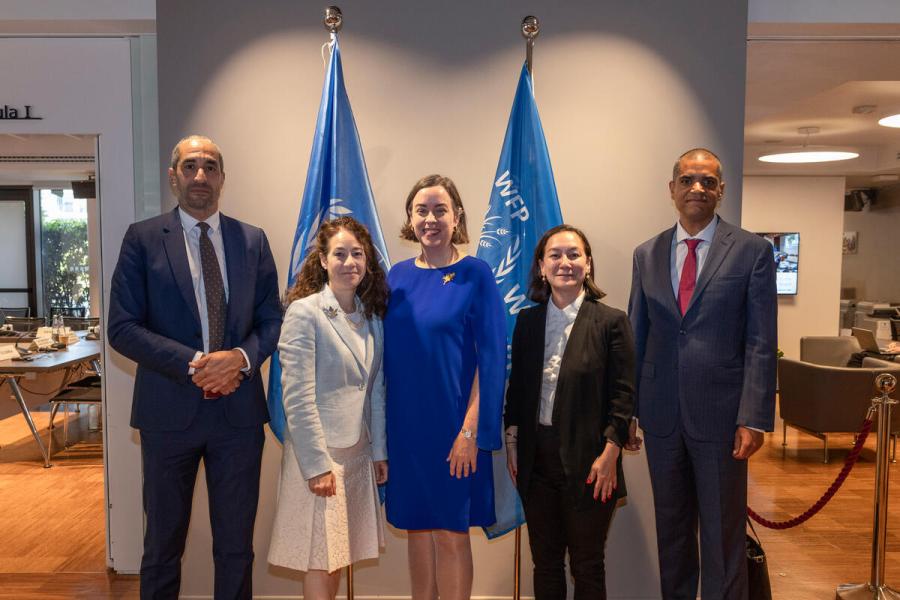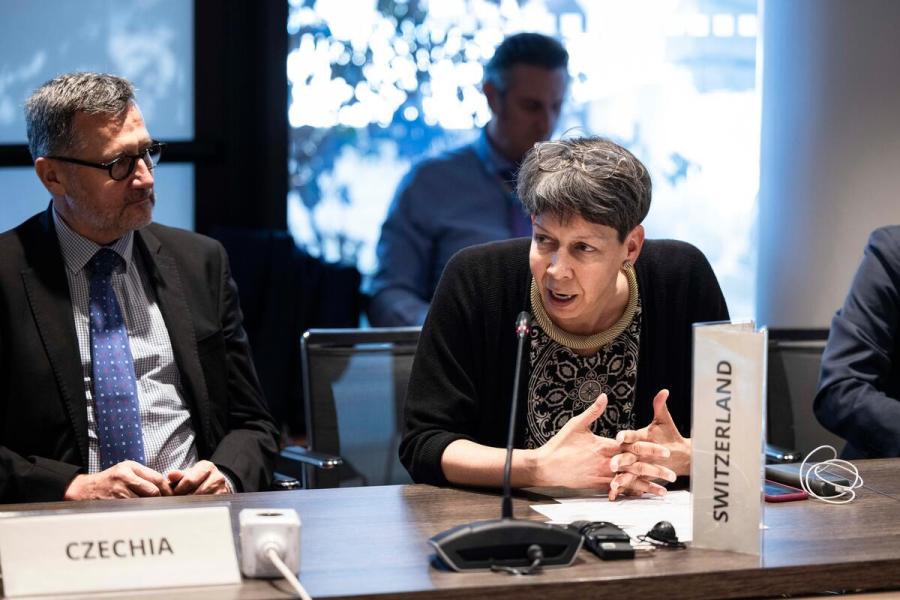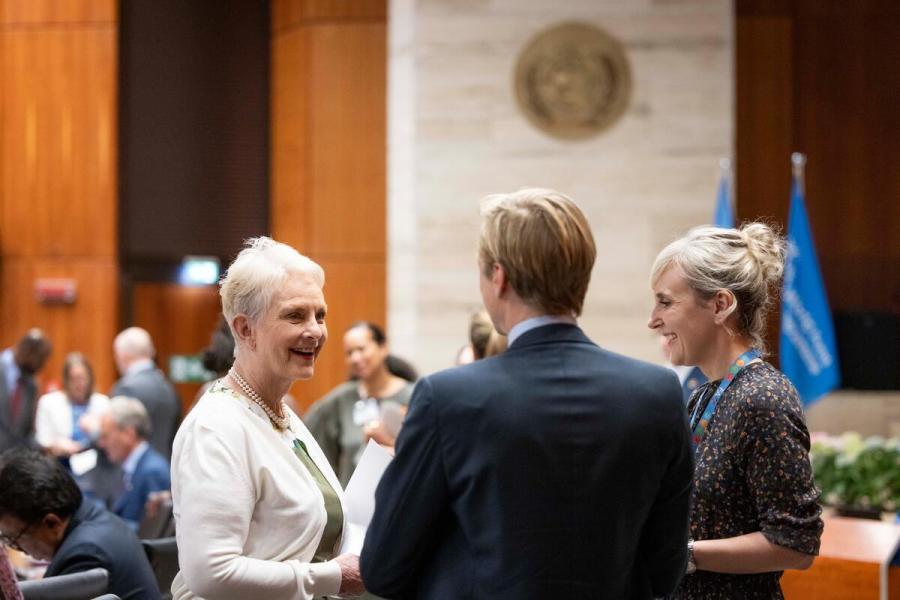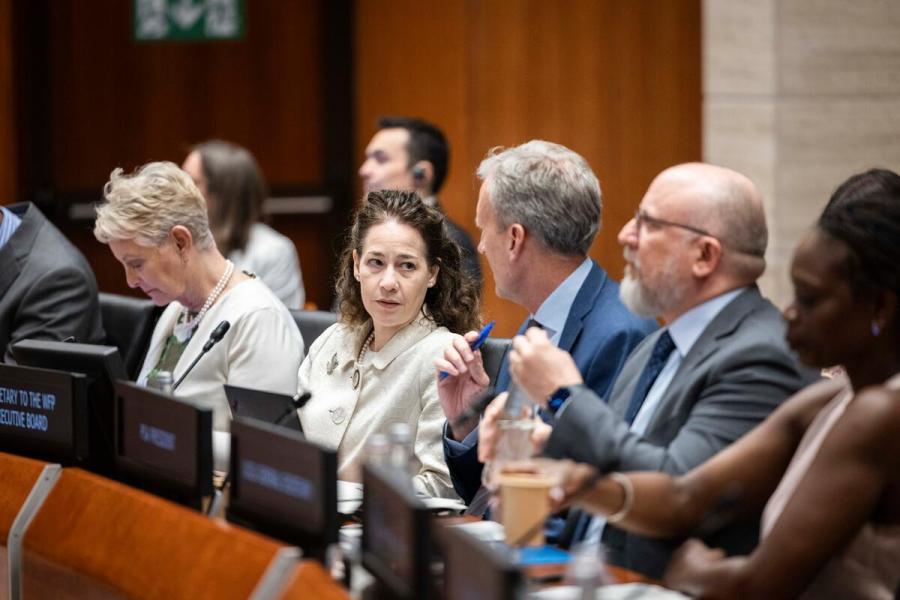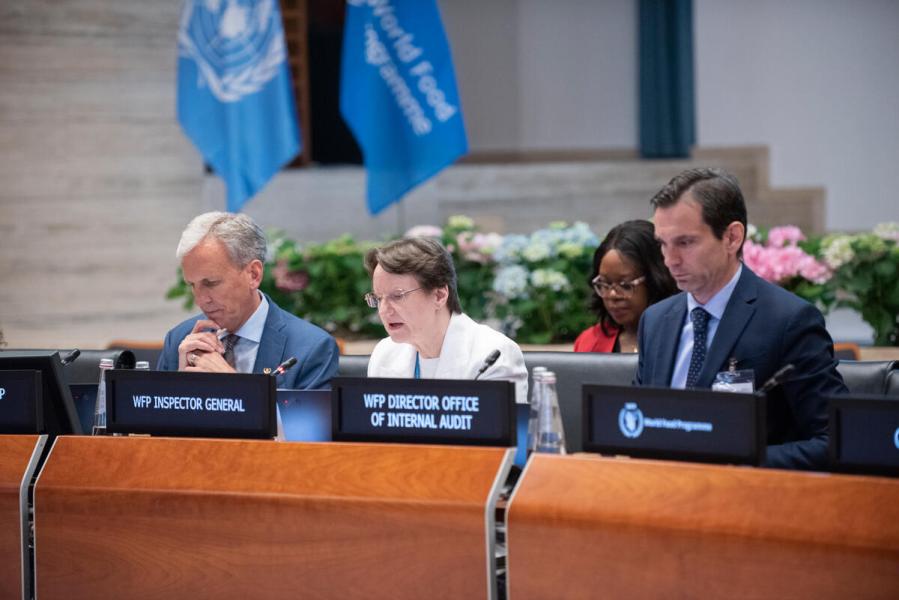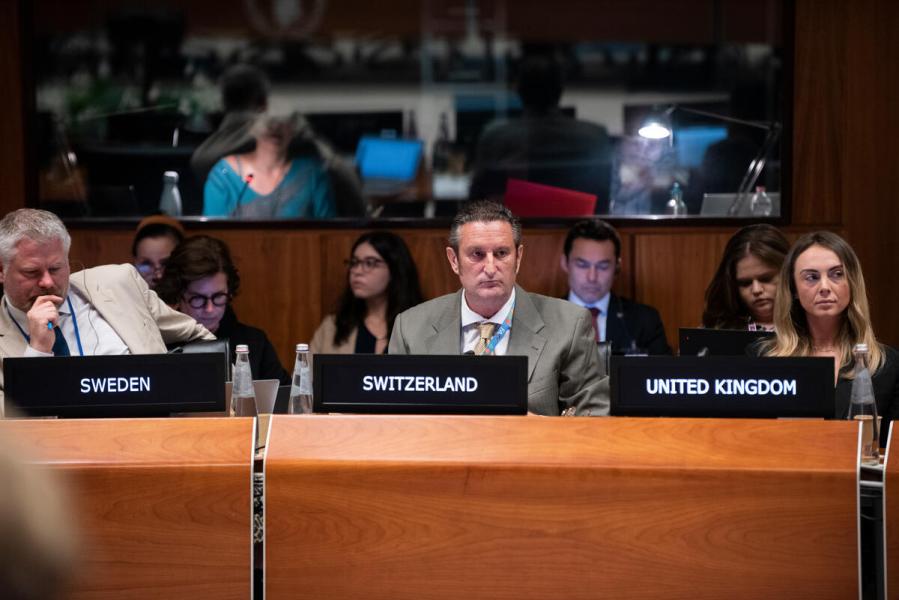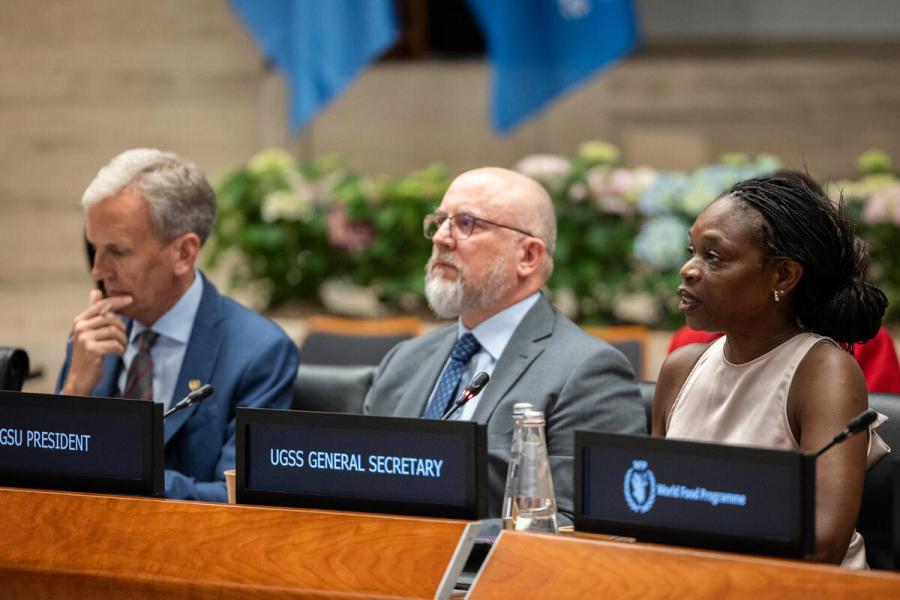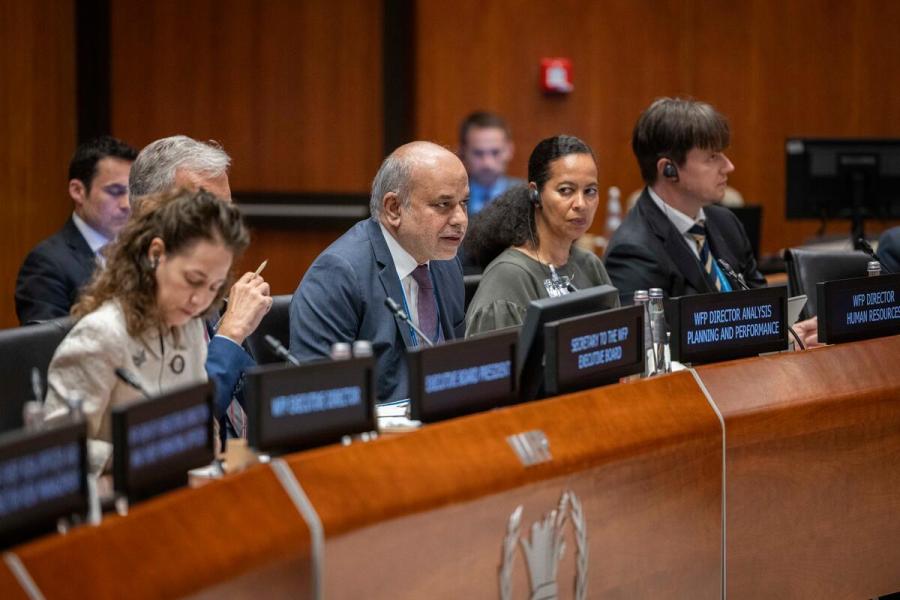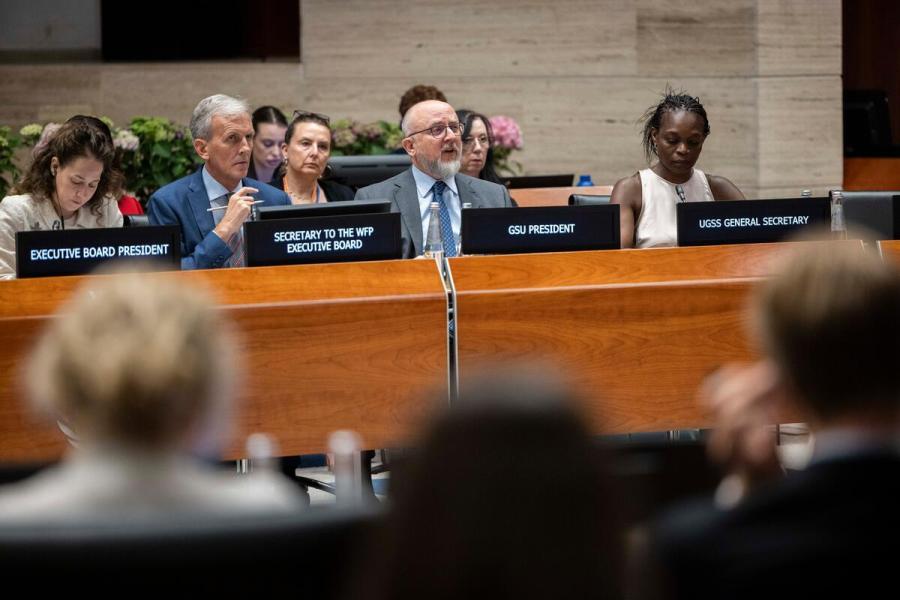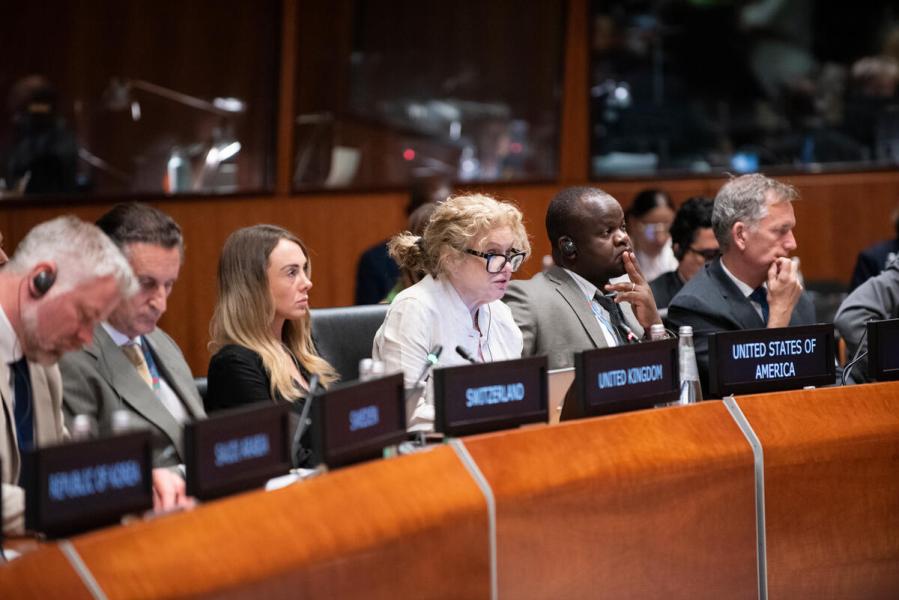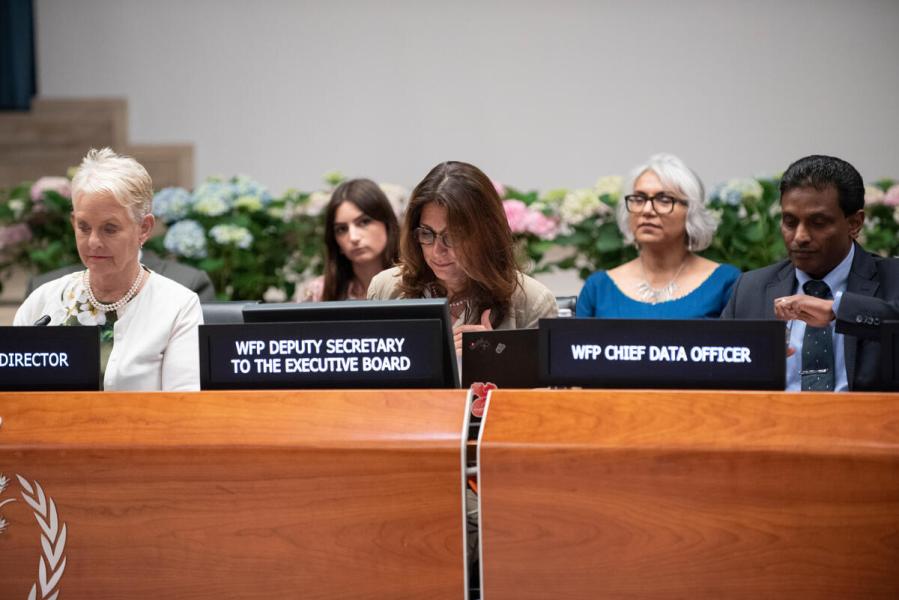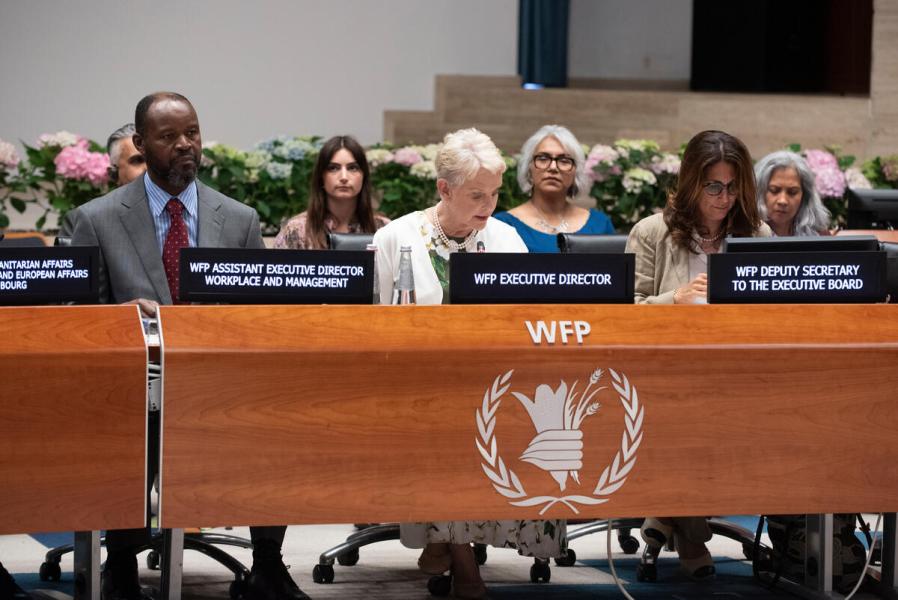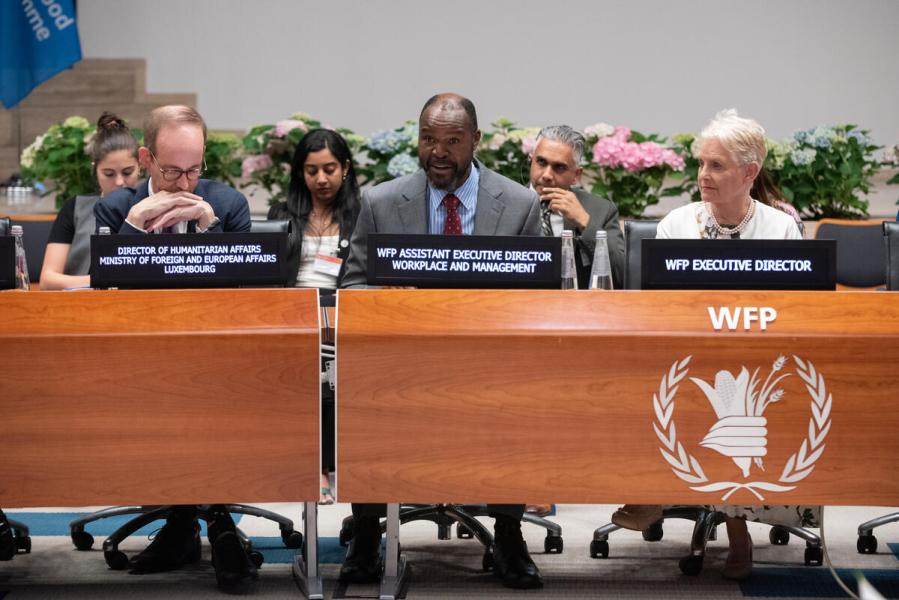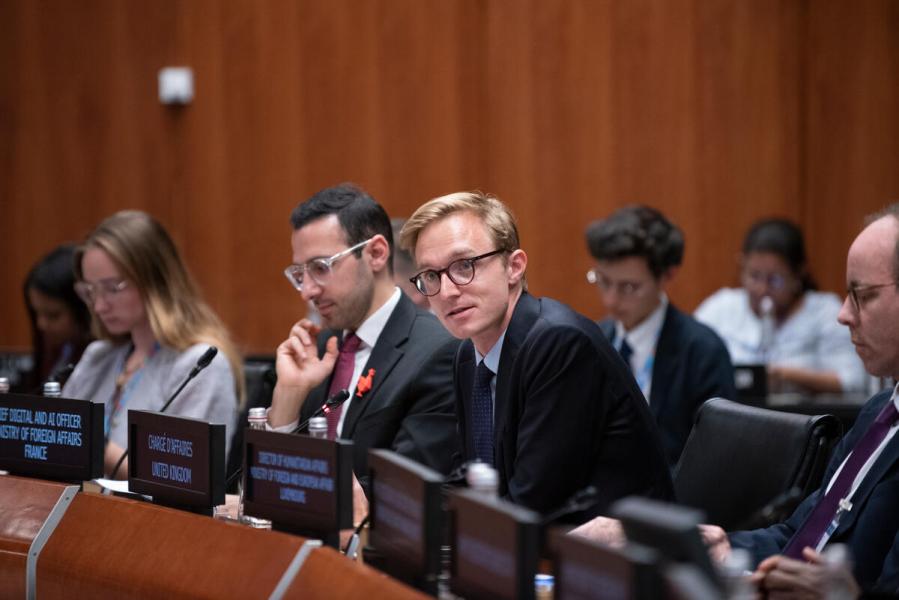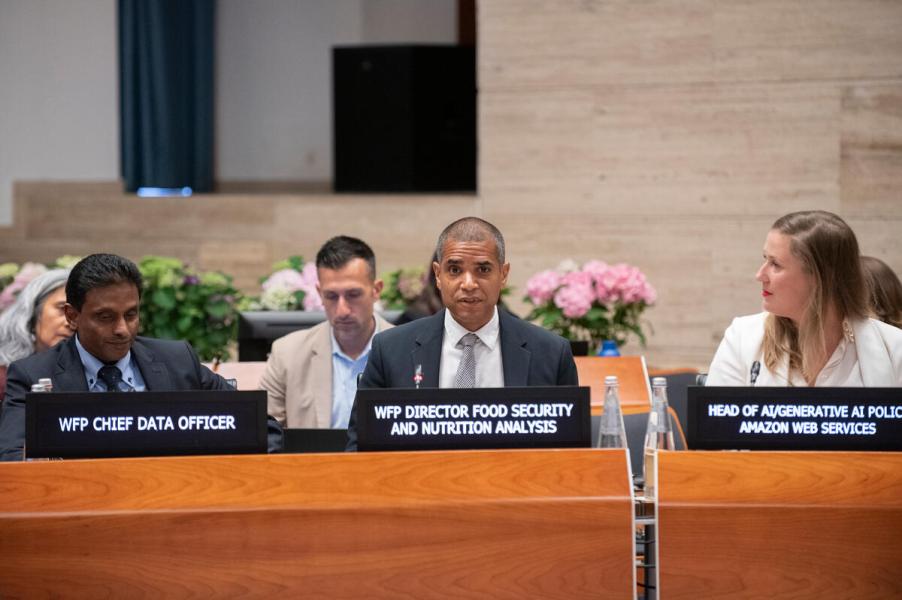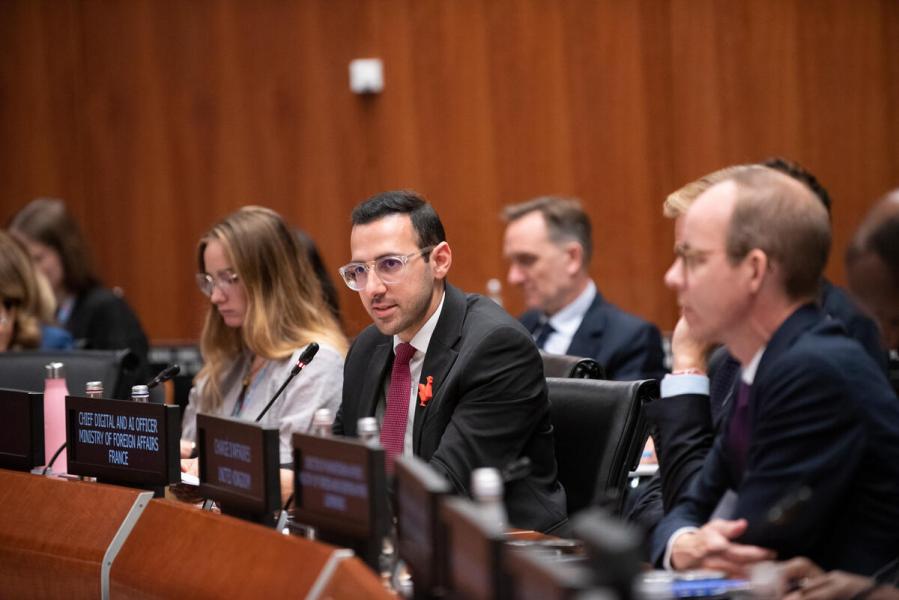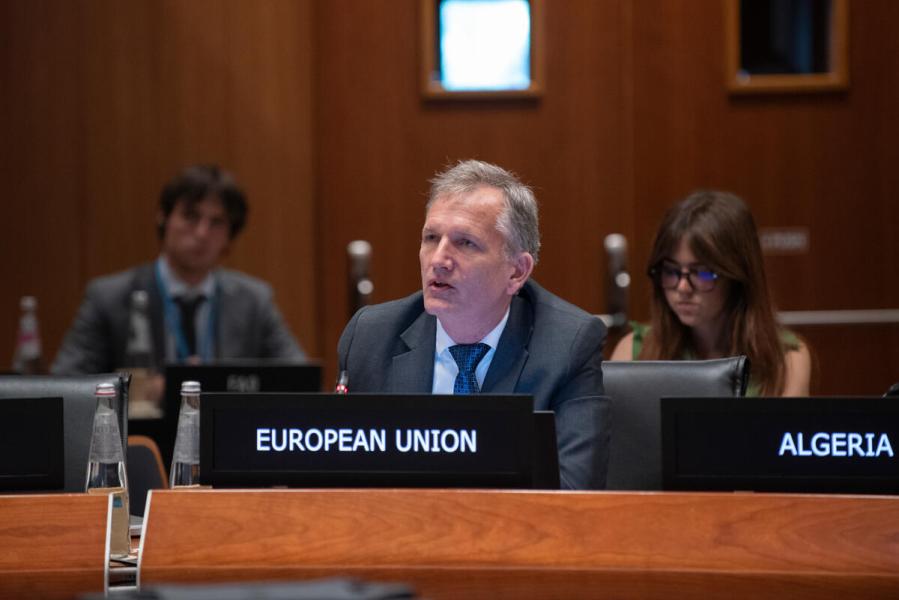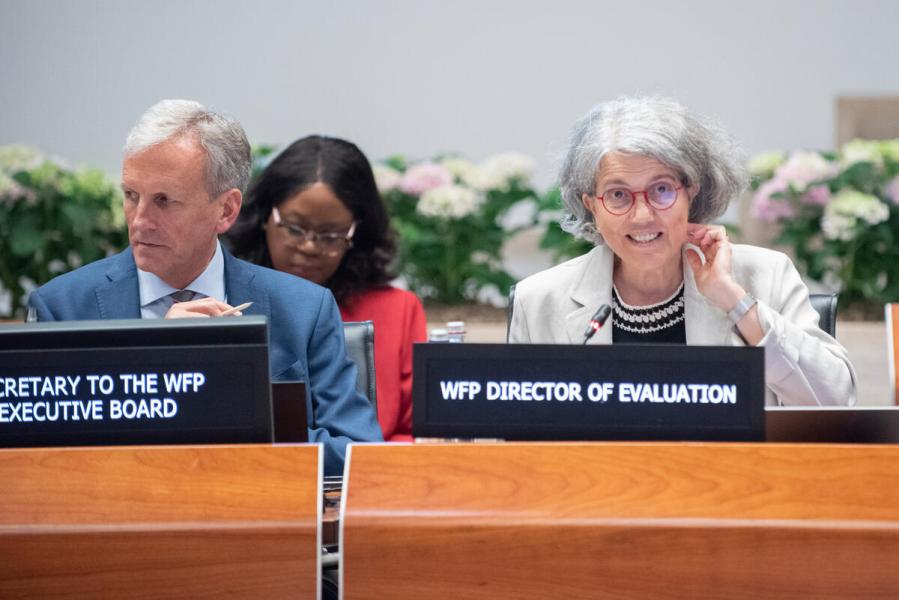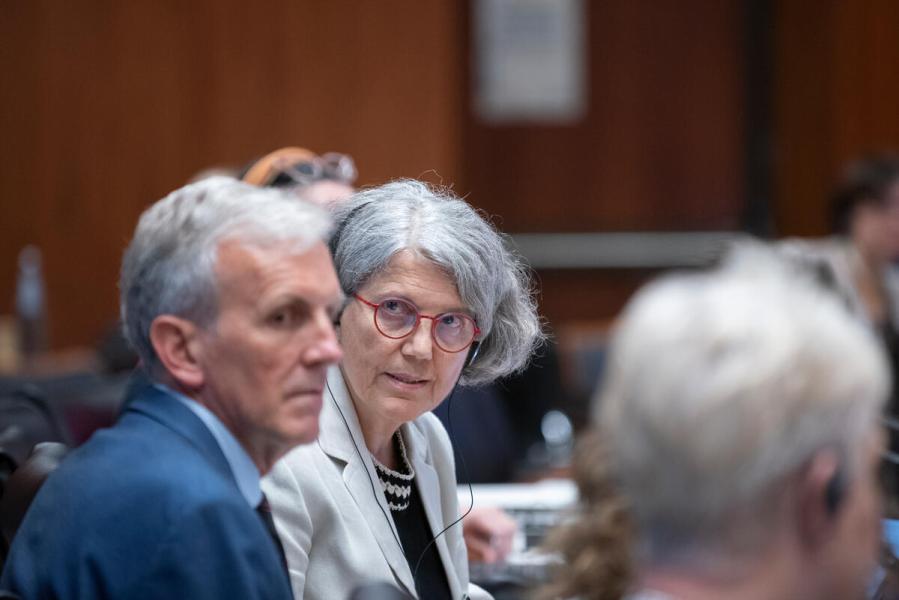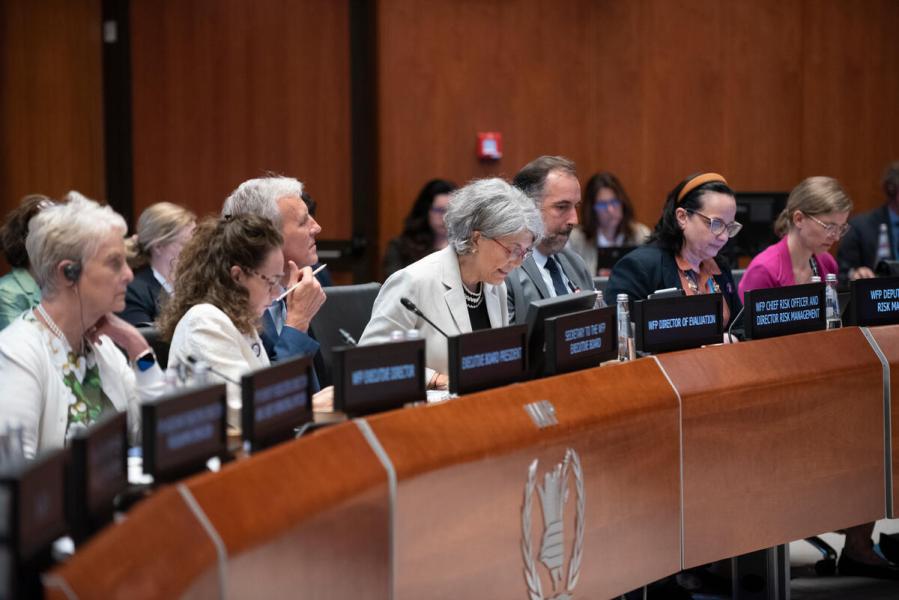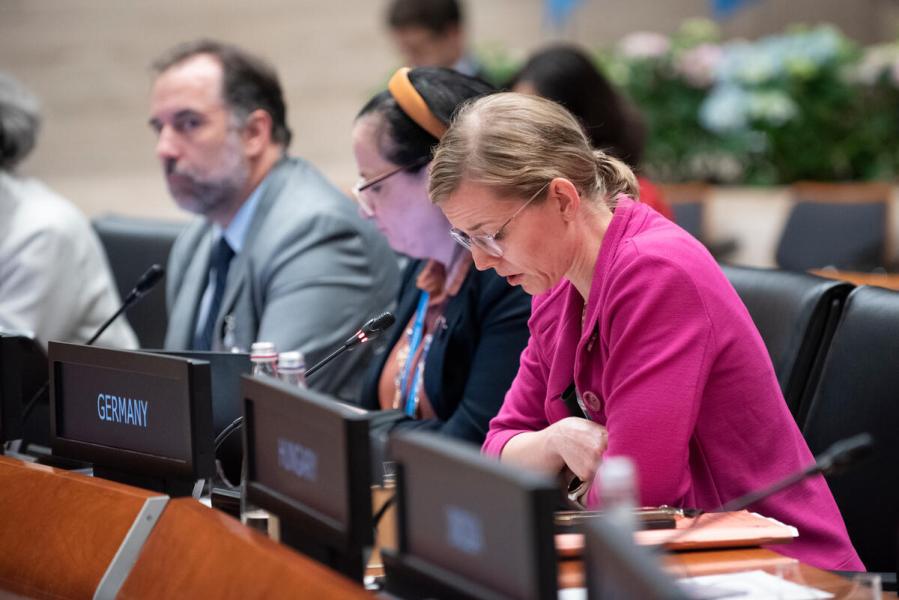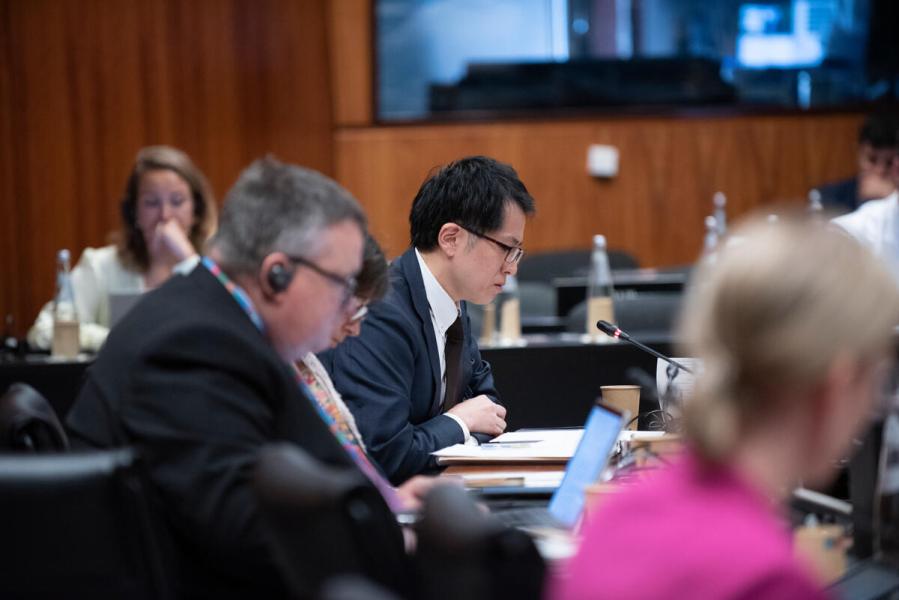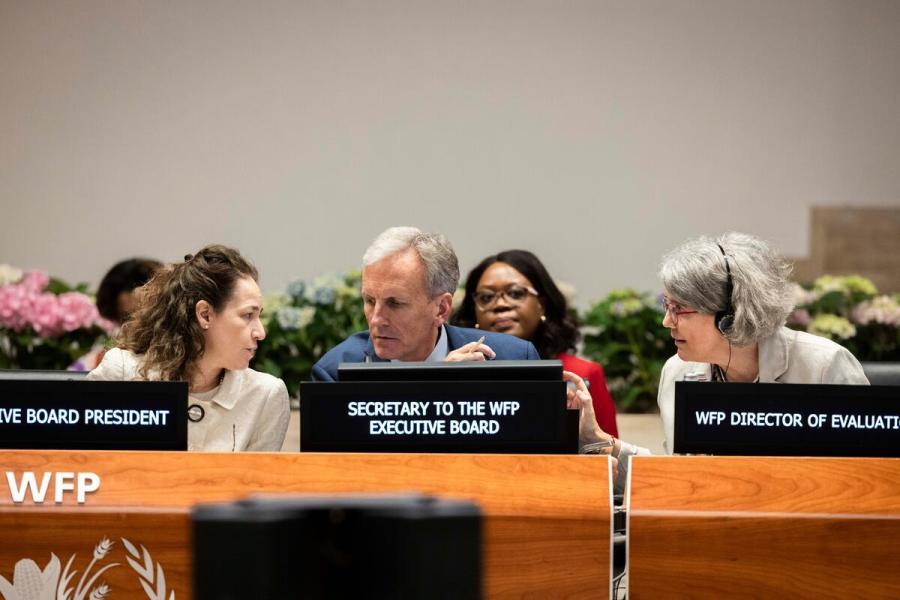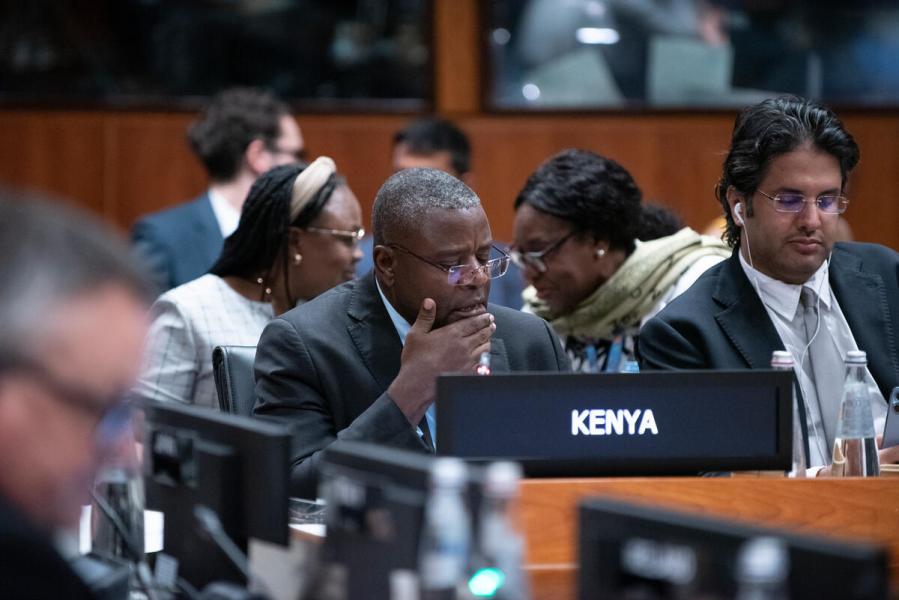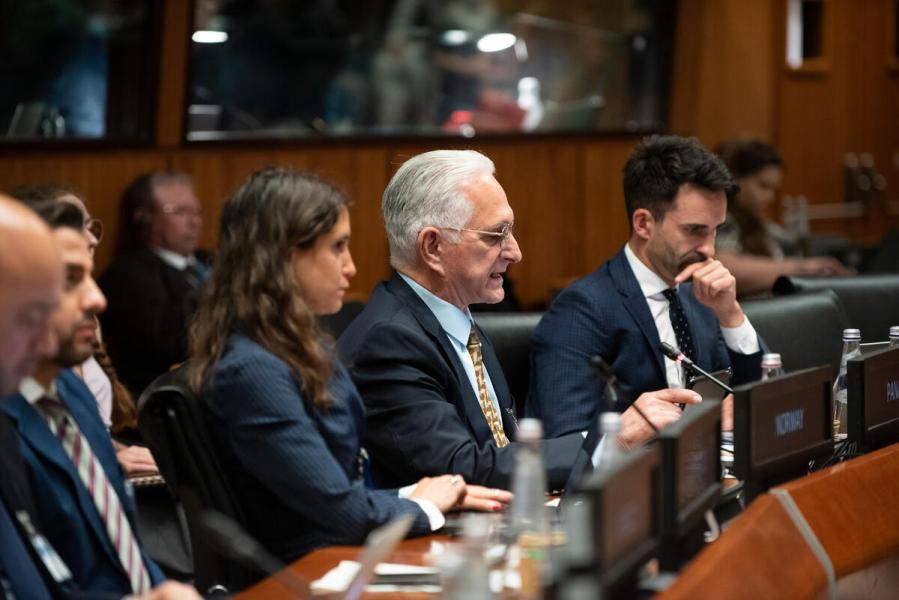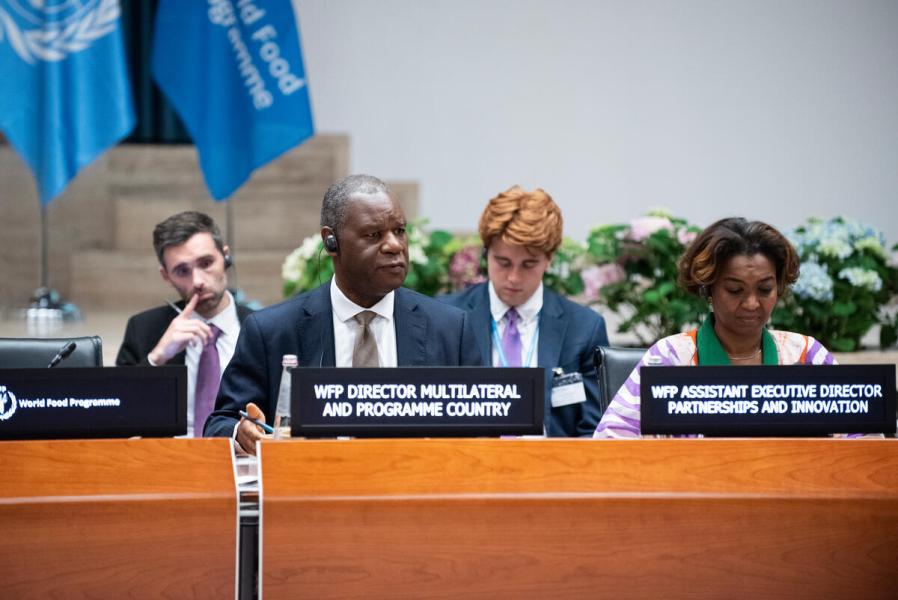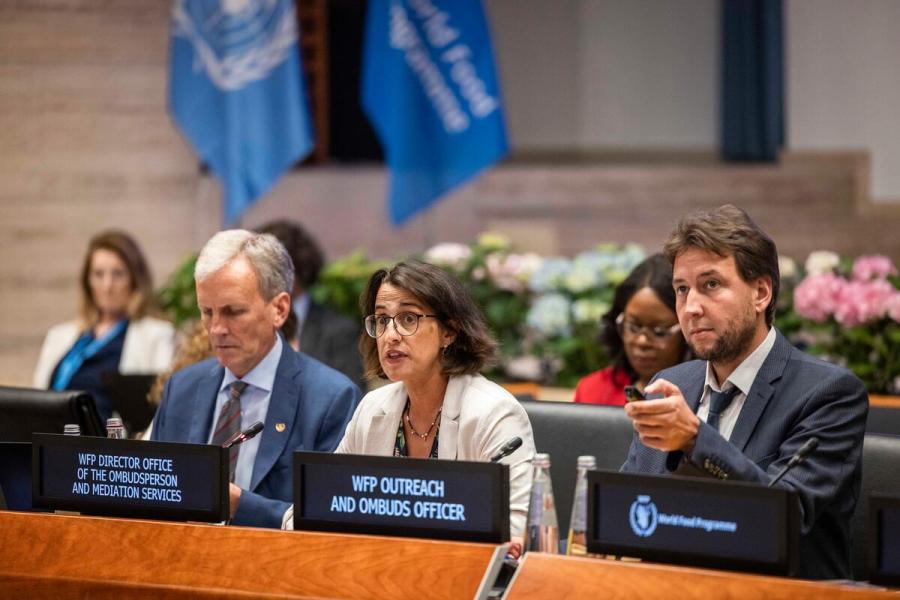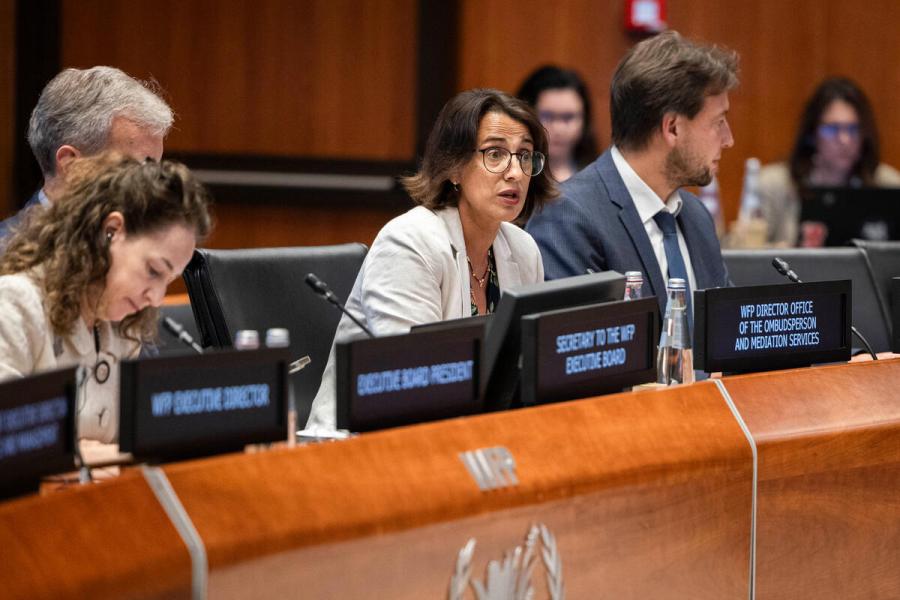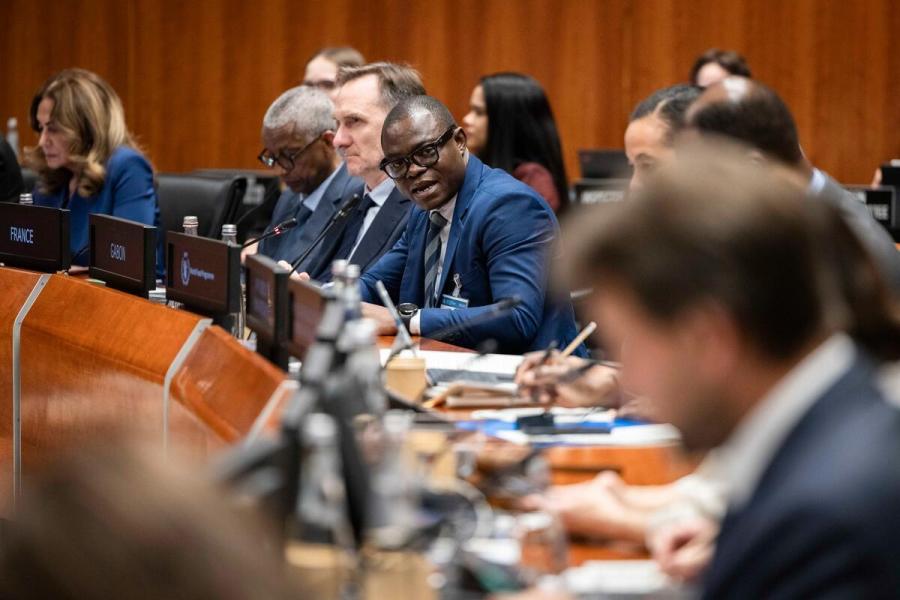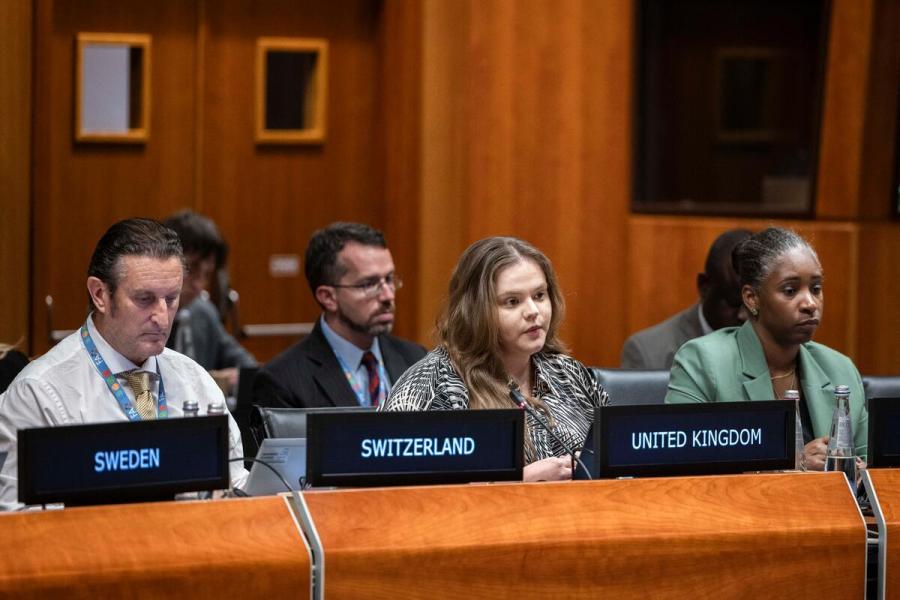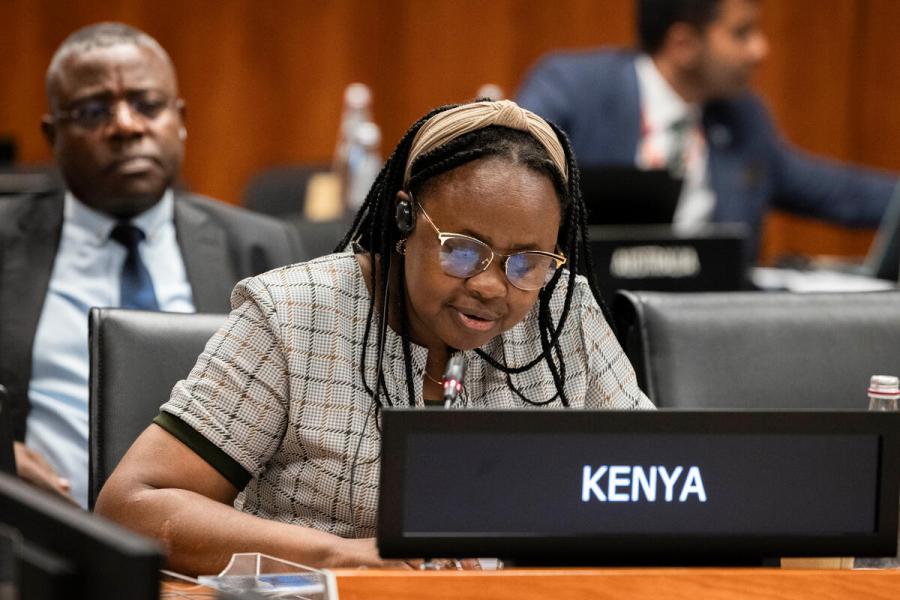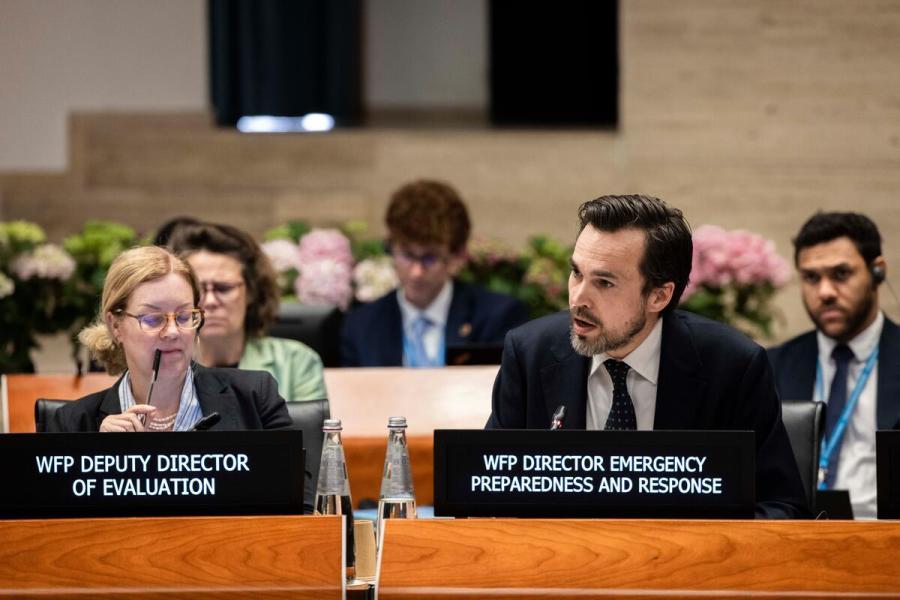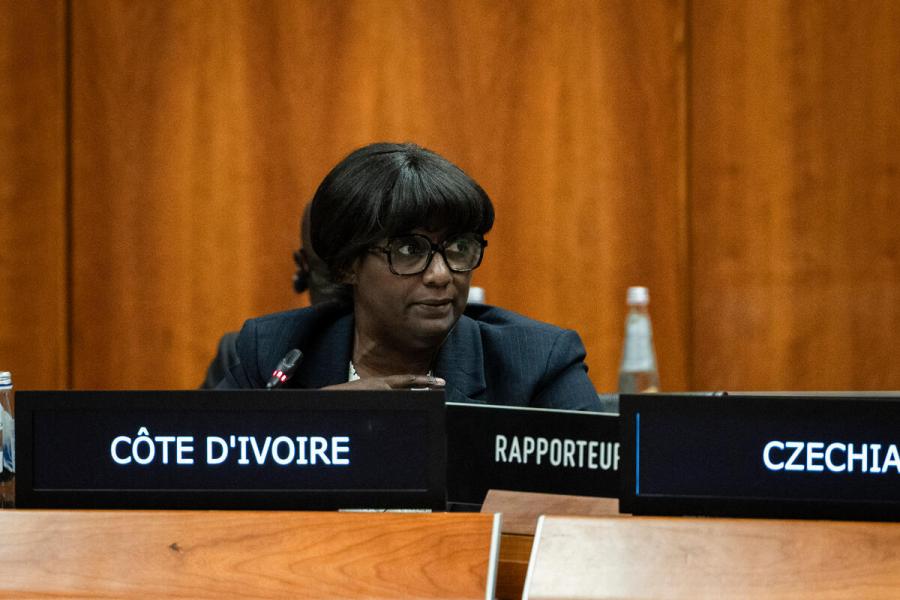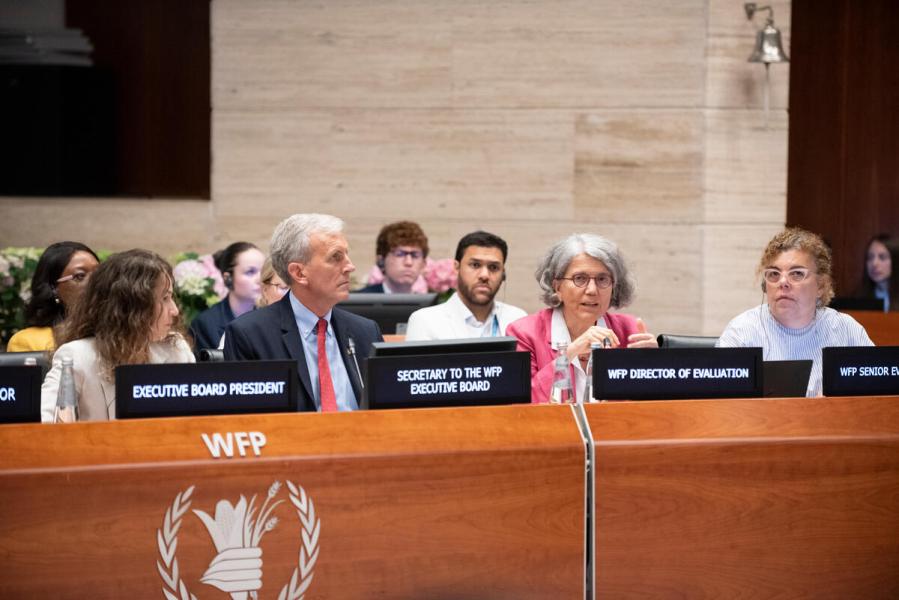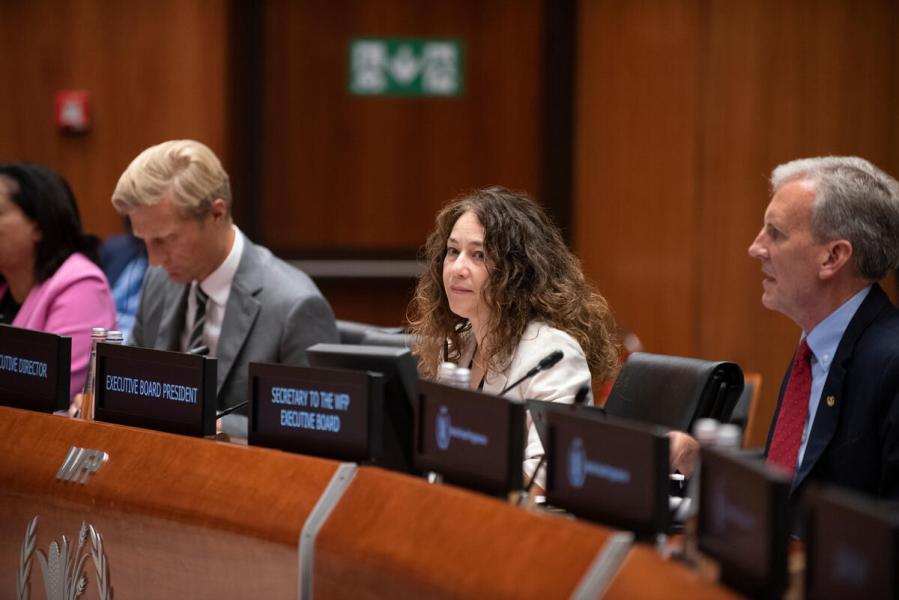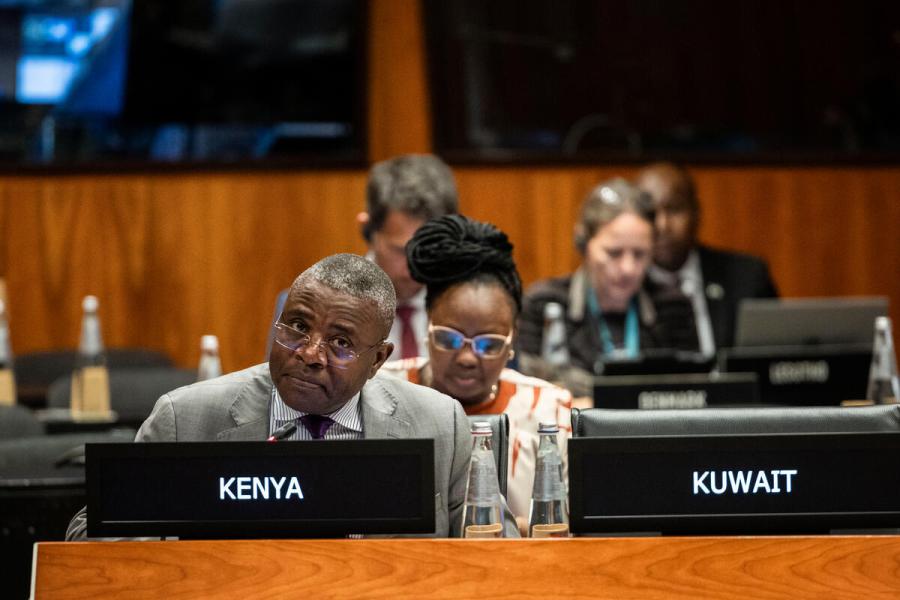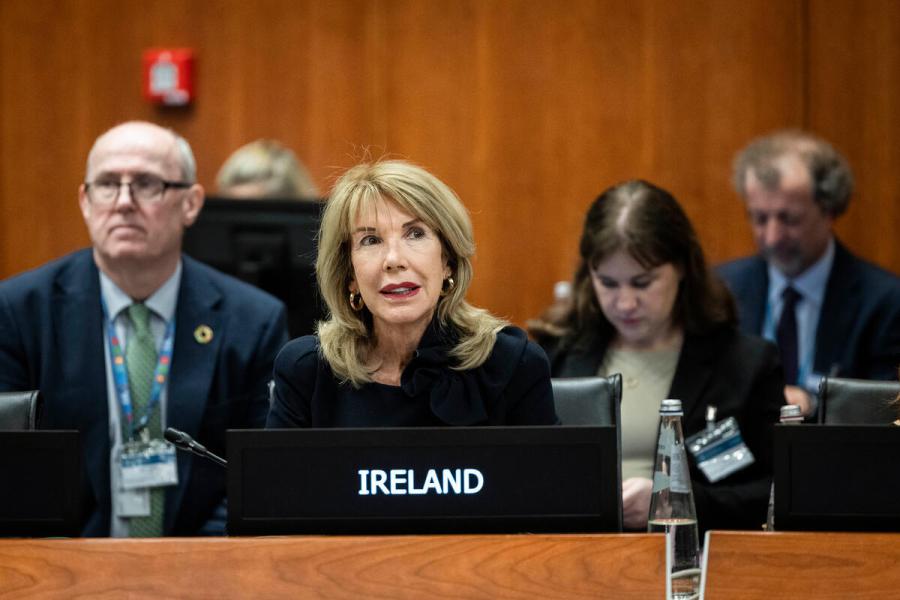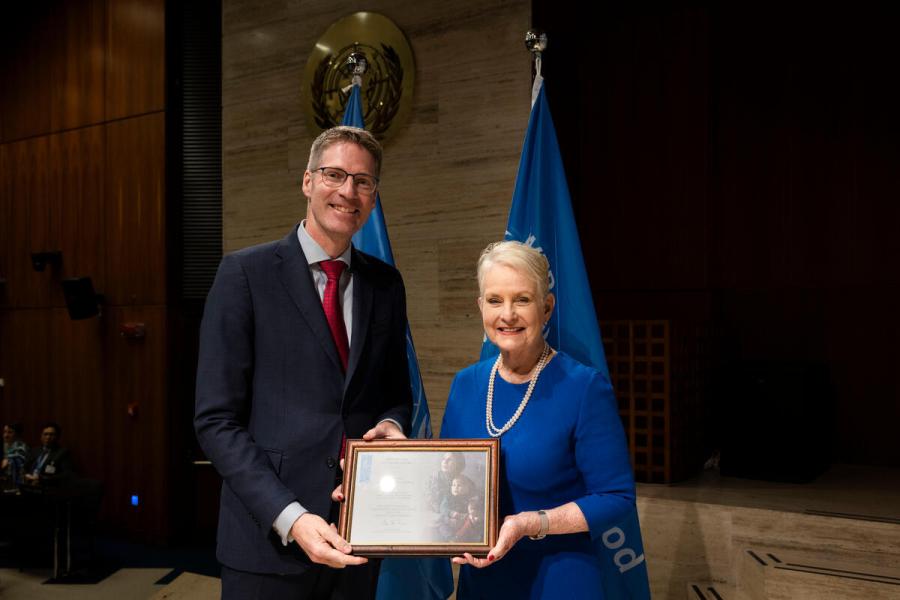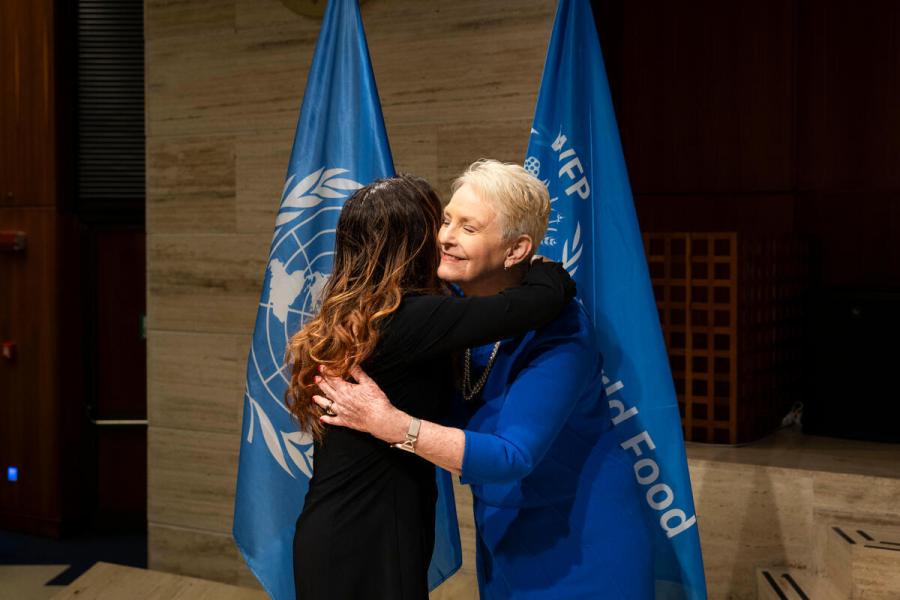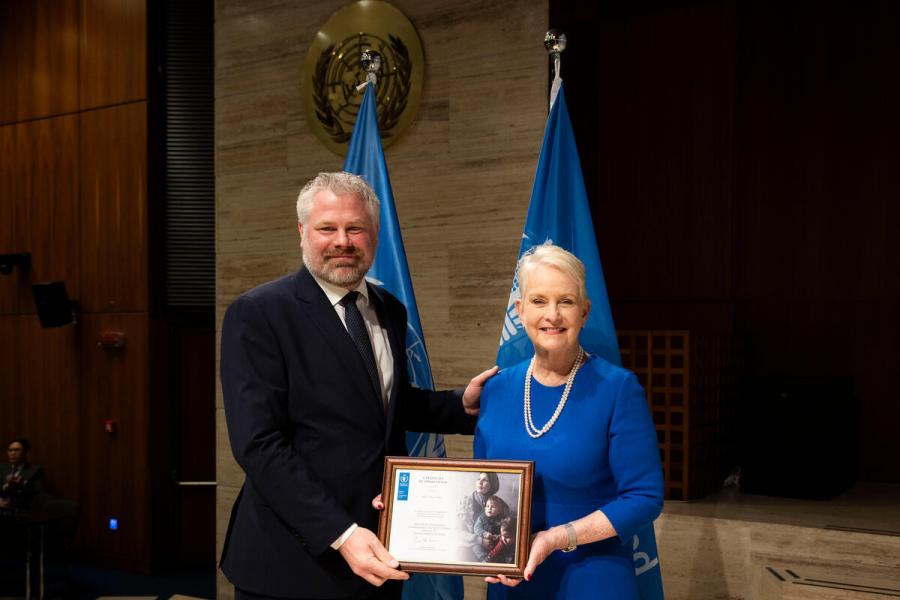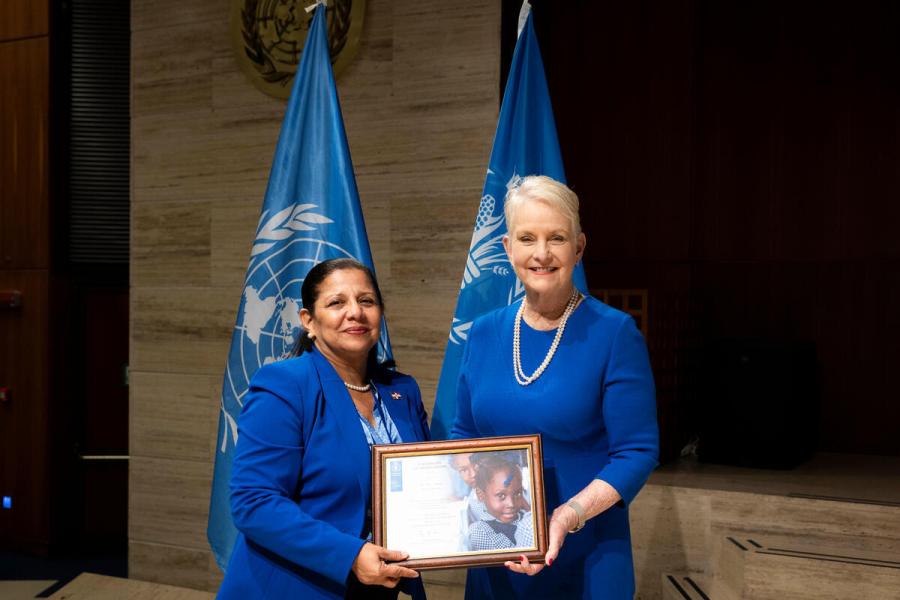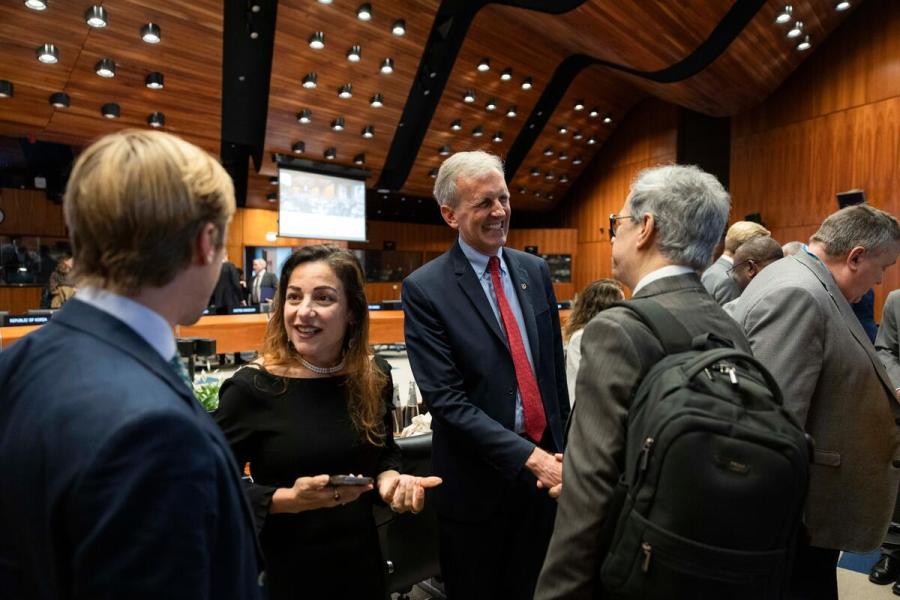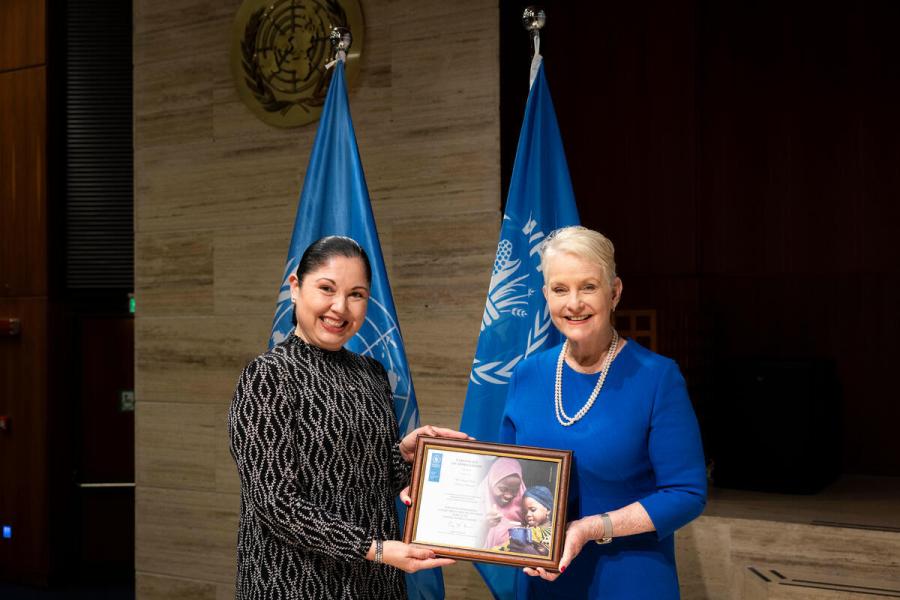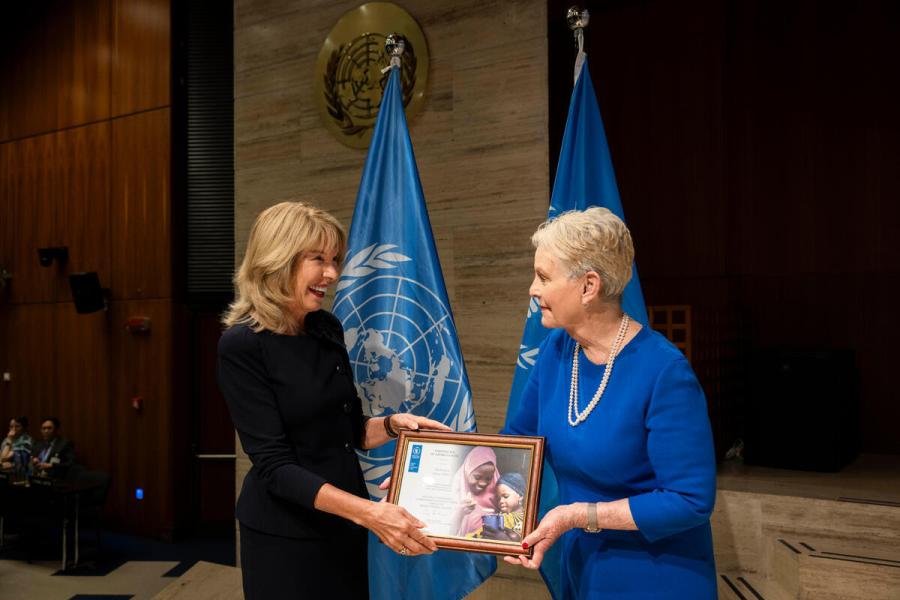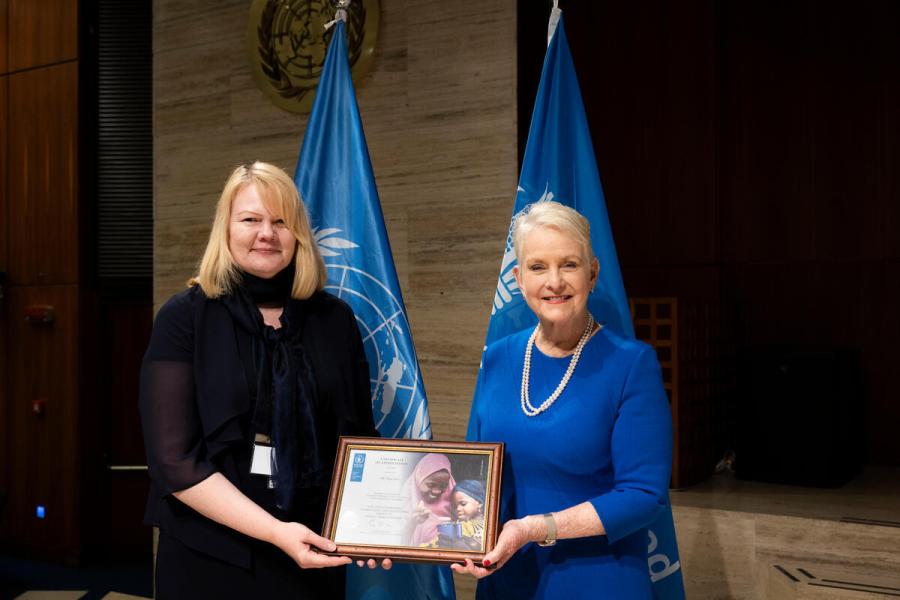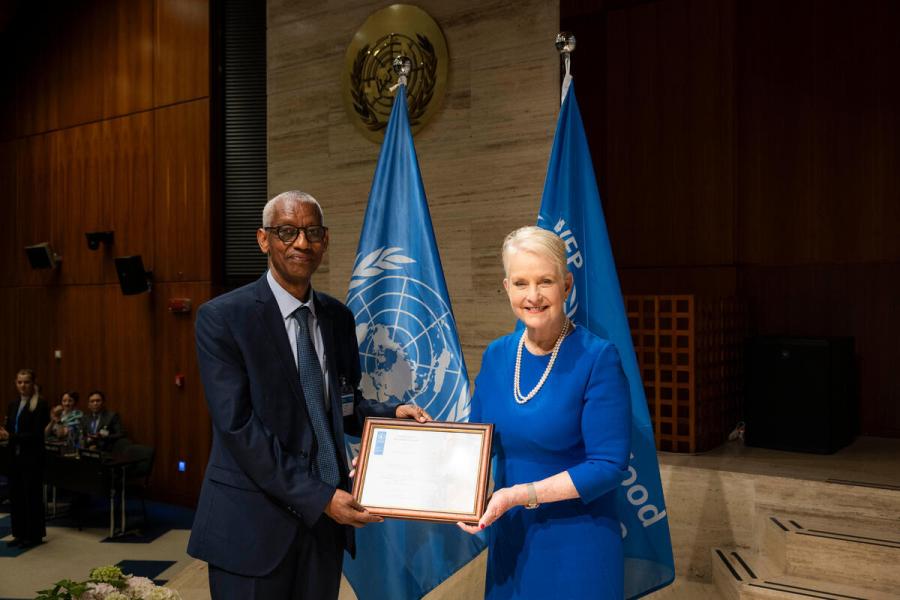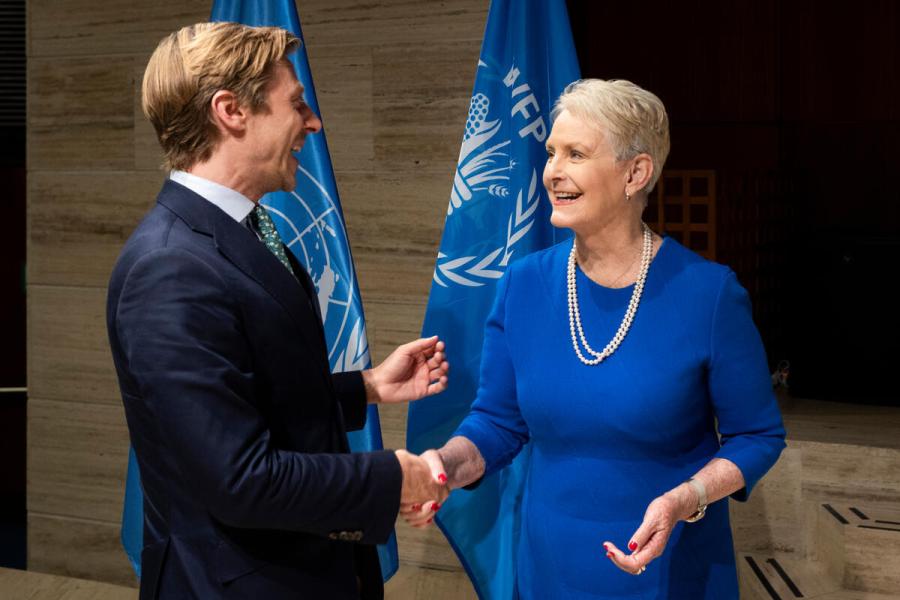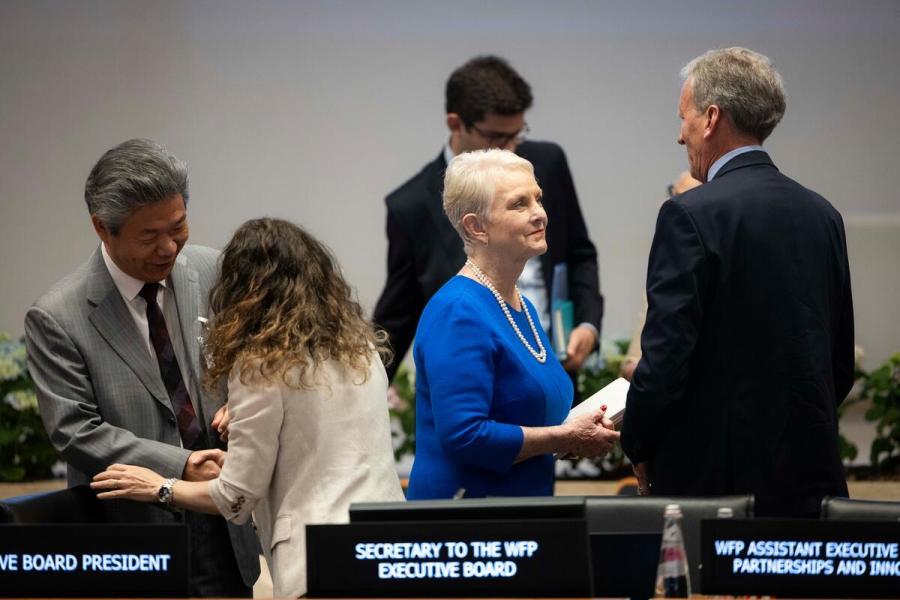From 23 to 26 June, the WFP Executive Board convened at a time of growing global challenges, marked by an increasingly complex geopolitical, operational and funding environment. The session served as a key opportunity for collective reflection on WFP’s agility and efficiency to adapt and respond to global needs. Oversight and accountability remained central to the agenda, reinforcing WFP’s commitment to transparency and effective governance.
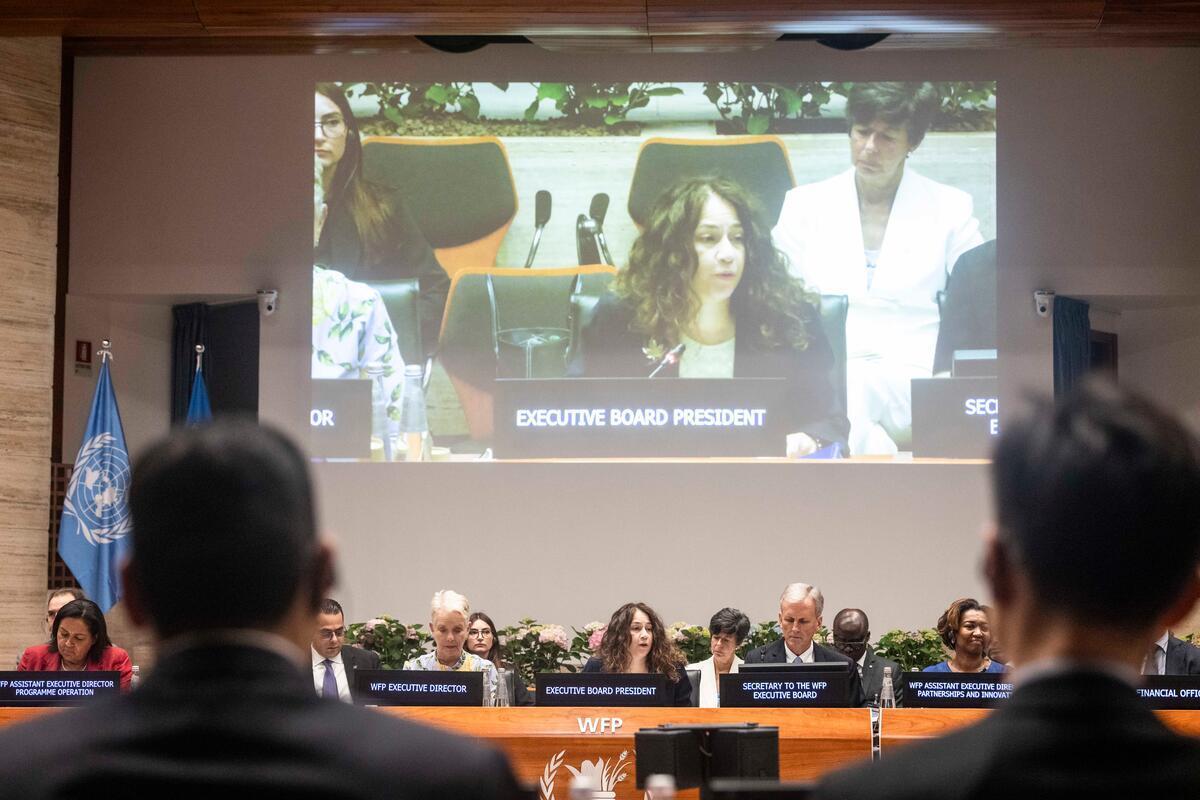
H.E. Ms. Elissa Goldberg, President of the WFP Executive Board 2025 and Ambassador and Permanent Representative of Canada opens the Executive Board proceedings. Photo: WFP/Matteo Minnella
On Monday, 23 June, at the opening of the annual session of the Executive Board, the Executive Director, Cindy McCain, welcomed members and observers with a call for solidarity and bold action to meet rising humanitarian needs amidst growing global challenges.
ED McCain underscored the challenges facing WFP teams on the ground, drawing from her recent visits to Ukraine and the Democratic Republic of the Congo (DRC), and praised the courage and commitment of frontline employees working with dignity in hardship locations such as Afghanistan, Gaza, Myanmar and Sudan. ED McCain also condemned the recent deadly attack on the WFP-UNICEF convoy in Darfur, Sudan.
ED McCain highlighted the impact of the global funding crisis, stressing that the entire humanitarian system is overstretched and underfunded. As a result of these cuts, WFP was forced to halt or suspend operations or significantly reduce rations including in Afghanistan and South Sudan.
In response to these challenges and the complex geopolitical landscape, WFP is finalizing a new strategic plan to guide its efforts over the next four years (2026-2029). WFP has also redesigned its internal structures, streamlined operations and realigned its workforce to focus more resources on frontline delivery. Among the corporate efficiency measures, ED McCain announced a 15% cut to the PSA budget in 2026 to USD 365 million and a USD 40 million allocation to replenish country-level safety nets. ED McCain emphasized that the difficult decision to reduce the size of WFP’s global staff will be managed with fairness and transparency, while prioritizing staff wellbeing and support throughout the process.
Finally, ED McCain highlighted that WFP is developing a resource mobilization strategy, a five-year funding plan to expand support across key business sectors and expand private sector partnerships to help bridge the growing resource gap.
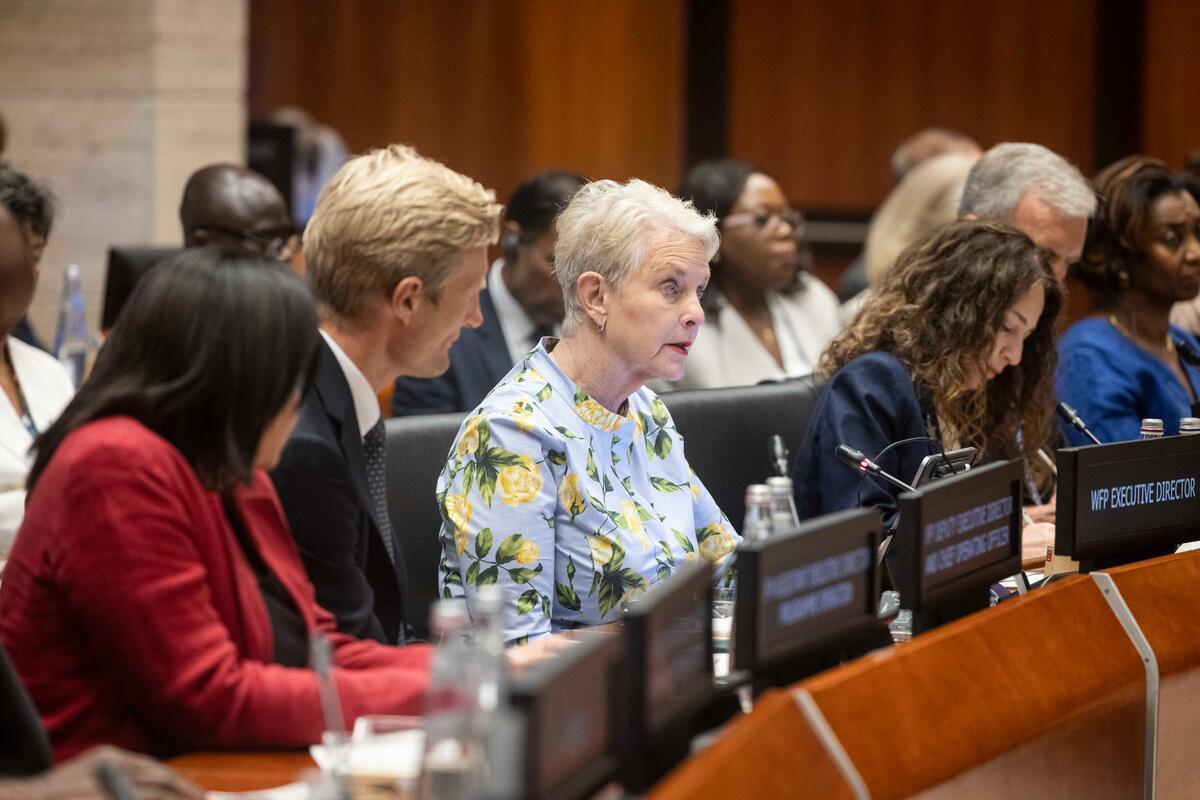
Opening remarks by Cindy McCain, WFP Executive Director. Photo: WFP/Matteo Minnella
Speaking as a special guest, Tom Fletcher, United Nations Under-Secretary-General for Humanitarian Affairs and Emergency Relief Coordinator, delivered a message of appreciation and urgency from the Democratic Republic of the Congo (DRC), where he was on mission.
Joining virtually on Monday afternoon, USG Fletcher offered what he called an “A++” rating for WFP’s leadership in one of the most demanding moments the humanitarian sector has ever faced. “We could not hope for stronger allies,” he told the Board, lauding WFP’s vision, creativity, determination in leading this sector and courage in maintaining operations in conflict zones, despite real and growing dangers.
USG Fletcher painted a sobering picture of the global landscape, citing rising needs with more people facing hunger, a hotter planet, escalating conflicts, and widespread humanitarian funding cuts. He called it a time defined by “indifference and impunity,” a stark reality in places like Gaza where people are starving, or in Afghanistan and Sudan, where civilians, especially women and girls, face extreme violence and neglect.
To address these converging crises, USG Fletcher outlined a sector-wide “humanitarian reset,” guided by what he termed the “Four Ds”:
- Define: sharpening global priorities to focus on the 114 million people in most urgent need, in line with a “hyper-prioritized” plan forced by funding cuts.
- Deliver: reforming systems to increase efficiency, reduce duplication, and bring innovation to direct more resources to communities.
- Devolve: strengthening local humanitarian leadership and community-based responses across crisis settings.
- Defend: standing firm on humanitarian principles and values.
Throughout his remarks, USG Fletcher emphasized WFP’s leadership role in the “humanitarian reset” which aims to reduce duplication as part of the UN80 reform. The USG also stressed that WFP has an irreplaceable role, not only in emergency response, but also as a leader in innovation, logistics, and resilience-building.
As part of his closing appeal, USG Fletcher urged Member States to continue supporting WFP and other agencies in avoiding the politicization and militarization of aid and championing the protection of civilians and aid workers. USG Fletcher concluded by making a plea for political support and generous contributions through multi-year, flexible funding.
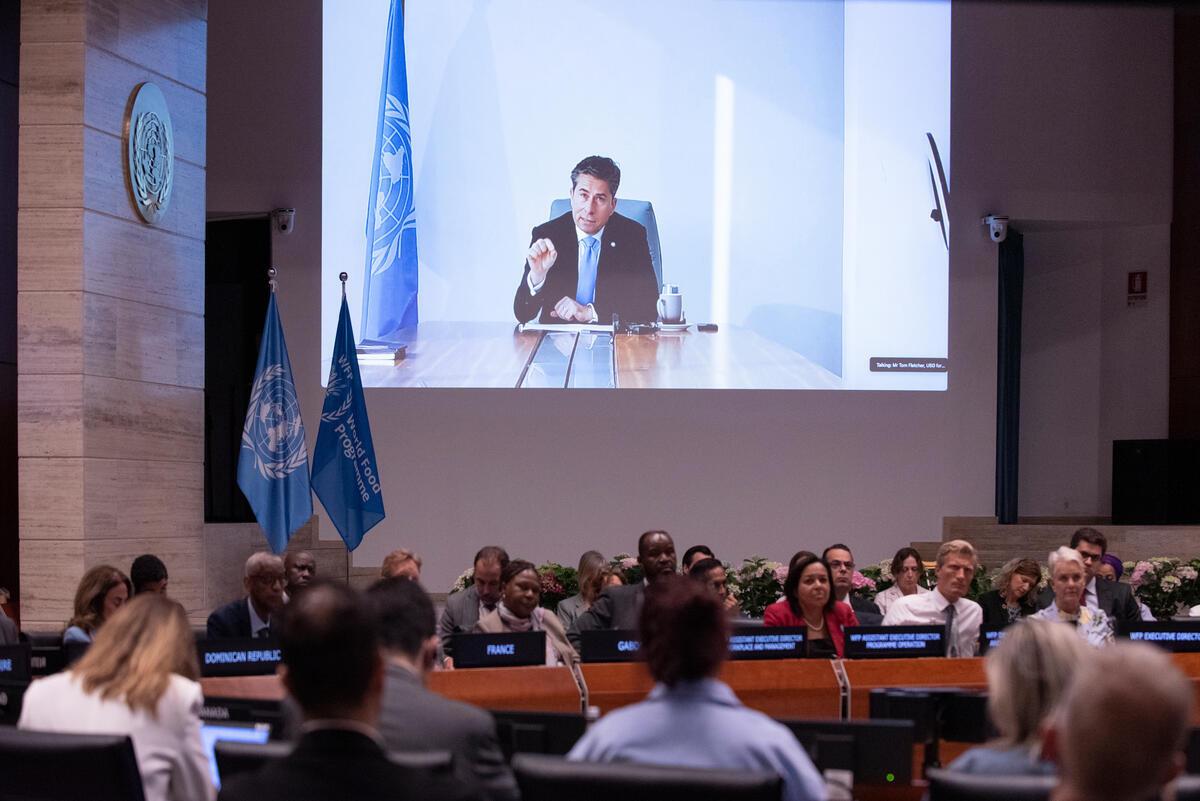
Intervention by Tom Fletcher, Under-Secretary-General for Humanitarian Affairs and Emergency Relief Coordinator (connected remotely). Photo: WFP/Daria Addabbo
During its 2025 annual session, the Executive Board reviewed and approved a comprehensive set of documents critical to WFP’s operational performance, financial management, oversight, and accountability. Key highlights include:
- Localization Policy: reaffirms WFP’s commitment to local leadership in humanitarian response, outlining principles and actions to strengthen the role of national and community-based actors in program design and delivery.
- Annual Performance Report for 2024: provides an overview of WFP’s achievements across strategic objectives, including food assistance delivered to over 124 million people, while also reflecting on operational challenges including funding shortfalls.
- Audited Annual Accounts for 2024 and Update to the 2025–2027 Management Plan: revised the 2025 contribution forecast down to USD 6.4 billion, with operational requirements rising 13% to USD 19.1 billion and an implementation plan of USD 9.6 billion (up 9%). Cost-saving measures include up to a 10% cut in the PSA budget and USD 150 million allocated for safety nets and insurance.
- Oversight Reports:
- Evaluation Reports:
- Annual Evaluation Report for 2024: highlights progress made by WFP in delivering its strategic objectives while facing challenges in evaluation capacity and resource allocation. The report shows improvements in the quality and use of evaluations to inform decision-making but identifies the need for enhanced integration and accountability mechanisms.
- Summary Evaluation Reports on WFP’s support to refugees and displaced persons and engagement in middle-income countries.
- Summary report on the corporate emergency evaluation of WFP’s response in Ukraine: concluded that from 2022 to 2024 WFP scaled up its emergency assistance rapidly and effectively, despite access constraints and logistical hurdles. The report also recommends improvements in exit planning and outcome monitoring.
- Operational Matters:
- Update on the United Nations Humanitarian Air Service: outlines WFP’s coordination of a 97-aircraft fleet, which in 2024 transported over 355,000 passengers across 21 countries and nearly 5,000 metric tons of humanitarian cargo to remote and insecure areas, supporting more than 600 humanitarian partners.
- Security Report: highlights a sharp increase in incidents affecting staff and operations in 2024 —the most dangerous year to date for humanitarian workers— prompting WFP to reinforce its duty of care framework and invest in risk mitigation measures.
For more details on the session’s agenda and documents, visit the 2025 annual Board session webpage.
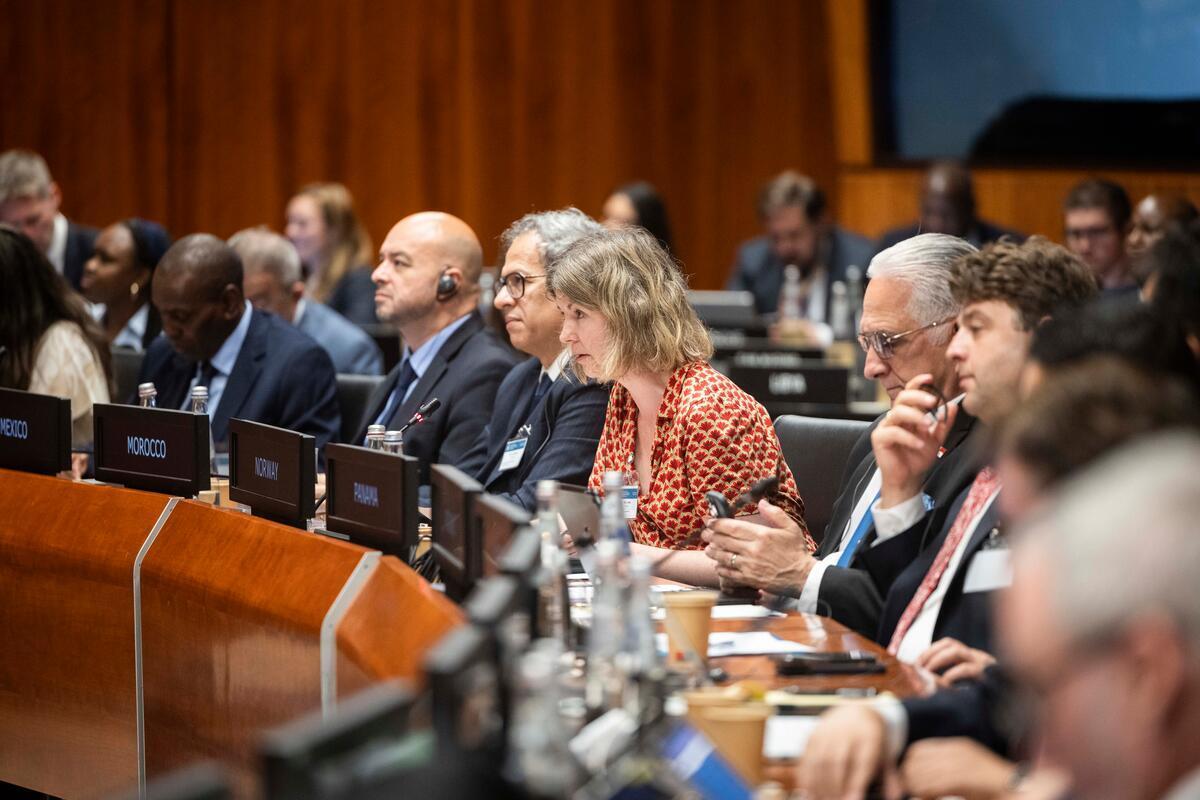
WFP 2025 annual session of the Executive Board. Photo: WFP/Matteo Minnella
On Tuesday, 24 June, WFP in partnership with the Governments of Australia, Brazil, Canada, Indonesia, Japan, Kenya, Switzerland and the United Kingdom hosted the side event Not A Target: Working Together to Protect Humanitarian Personnel in the Aula Delegatis.
Mr. Stephen Omollo, WFP’s Assistant Executive Director of the Workplace & Management Department, introduced the event highlighting the escalating threats faced by humanitarian workers, particularly in light of 2024 being the deadliest year on record, with over 360 aid workers killed in 20 countries.
The Executive Director, Ms. Cindy McCain, opened the event, followed by a video featuring voices of WFP staff and cooperating partners from the field. A panel discussion, moderated by H.E. Ms. Elissa Golberg, President of the Executive Board and Ambassador and Permanent Representative of Canada, brought together key voices from WFP and NGOs.
Among the panelists were Mr. Jean-Martin Bauer, WFP’s Director of the Food Security and Nutrition Analysis Service and former Country Director of Haiti, Ms. Tara Yip-Bannicq Ward, Global Roving Security Advisor at Plan International, Ms. Abby Stoddard, Director of Humanitarian Outcomes, and Mr. Hichem Khadhraoui, Executive Director of the Centre for Civilians in Conflict.
Speakers addressed the rise in security incidents, especially those affecting women and national staff, and examined WFP’s organizational responses, including the new duty of care framework and global initiatives such as the Ministerial Group for the Protection of Humanitarian Personnel which is pursuing a Declaration supporting the UN Secretary-General’s efforts to improve the safety and security of humanitarian personnel.
H.E. Ms. Julianne Cowley, Ambassador and Permanent Representative of Australia, closed the event with a call for stronger collective action to protect humanitarian personnel worldwide.
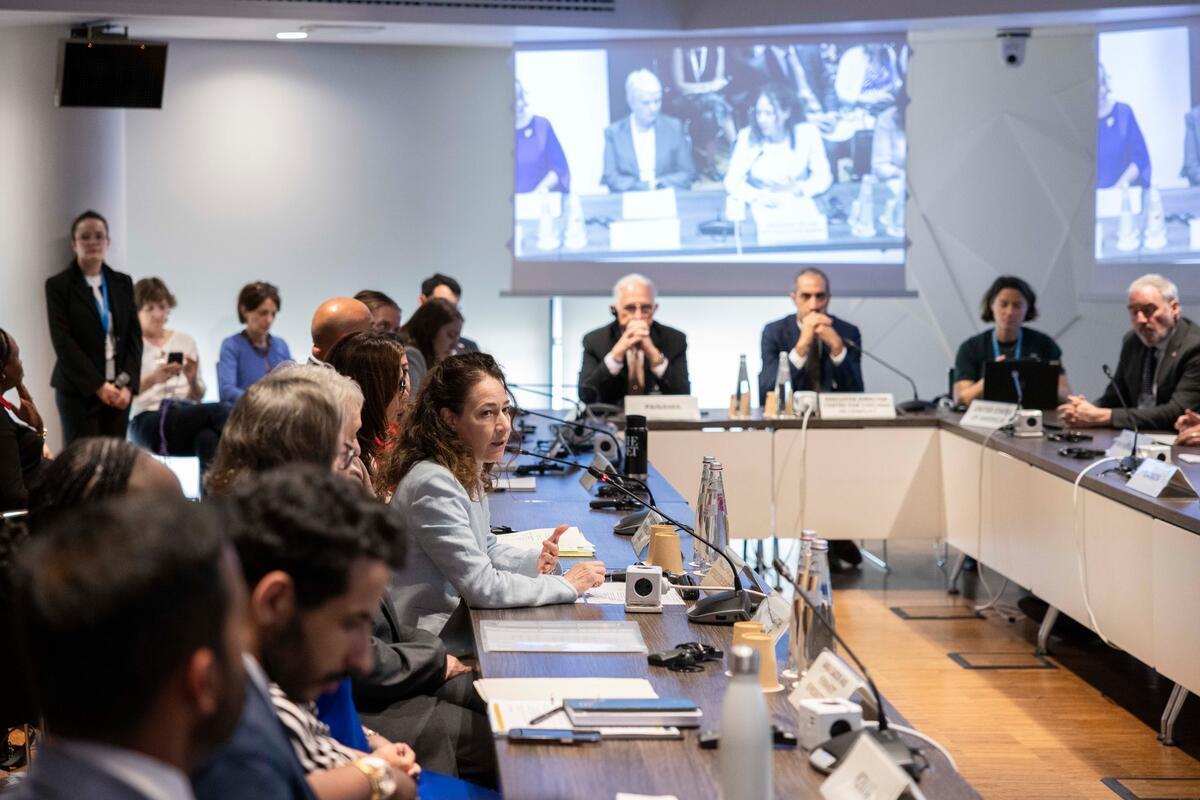
H.E. Ms. Elissa Golberg, President of the Executive Board and Ambassador and Permanent Representative of Canada, moderating a panel discussion at the event “Not A Target: Working Together to Protect Humanitarian Personnel”. Photo: WFP/Matteo Minnella
On Wednesday, 25 June, the WFP Technology Division hosted the side event on Harnessing Artificial Intelligence to accelerate WFP’s fight against hunger in the Auditorium.
Held in collaboration with the governments of Luxembourg, France and the United Kingdom, the event showcased how WFP is leveraging AI solutions, responsibly harnessed and guided by its Artificial Intelligence Strategy.
The event opened with remarks from WFP Executive Director Cindy McCain, followed by an overview of the AI strategy presented by Stephen Omollo, Assistant Executive Director for Workplace Management.
A video illustrated how AI is already being used to enhance WFP’s operations, setting the stage for a dynamic panel discussion. Magan Naidoo, WFP’s Chief Data Officer, introduced a distinguished panel featuring Mr. Max Lamesch, Director for Humanitarian Affairs for the Ministry of Foreign and European Affairs of the Grand Duchy of Luxembourg, Mr. Rami Abi Akl, Chief Digital and AI Officer for the Ministry of Foreign Affairs of the Government of France, Mr. Toby Parker, Chargé d’affaires at the United Kingdom Permanent Representation to the United Nations Food and Agriculture Agencies in Rome, Ms. Sasha Rubel, Head of AI/Generative AI Policy for Europe, Middle East and Africa at Amazon Web Services, and Mr. Jean-Martin Bauer, WFP Director Food Security Analysis. The panelists explored how partnerships with Member States and the private sector can support WFP in leveraging AI to improve efficiency, responsiveness, and impact.
The session also included a moderated Q&A with audience participation, offering reflections on the practical steps needed to implement the AI strategy. Mr. Naidoo concluded the event with closing remarks, emphasizing the importance of collaboration and innovation in shaping a future-ready WFP.
Two exhibits were held during the week.
The exhibit, Ensuring Safe and Dignified Access to Food: WFP’s Journey in Protection from Sexual Exploitation and Abuse, was launched on Tuesday morning at the Red Foyer.
The exhibition highlighted WFP’s progress in integrating protection from sexual exploitation and abuse (PSEA) into its operations and organizational culture. Featuring powerful visuals from the field, frontline testimonies, and practical examples of PSEA in action, the exhibit provided a compelling space for learning and reflection.
Isabella Castrogiovanni, Director of WFP’s PSEA Unit, opened the event, followed by the Executive Director Cindy McCain—currently serving as the Inter-Agency Standing Committee (IASC) Champion on Protection from Sexual Exploitation and Abuse and Harassment (2024–2025)—who led the formal inauguration. Her presence underscored WFP’s strong leadership and commitment to driving accountability and systemic change across the humanitarian sector.
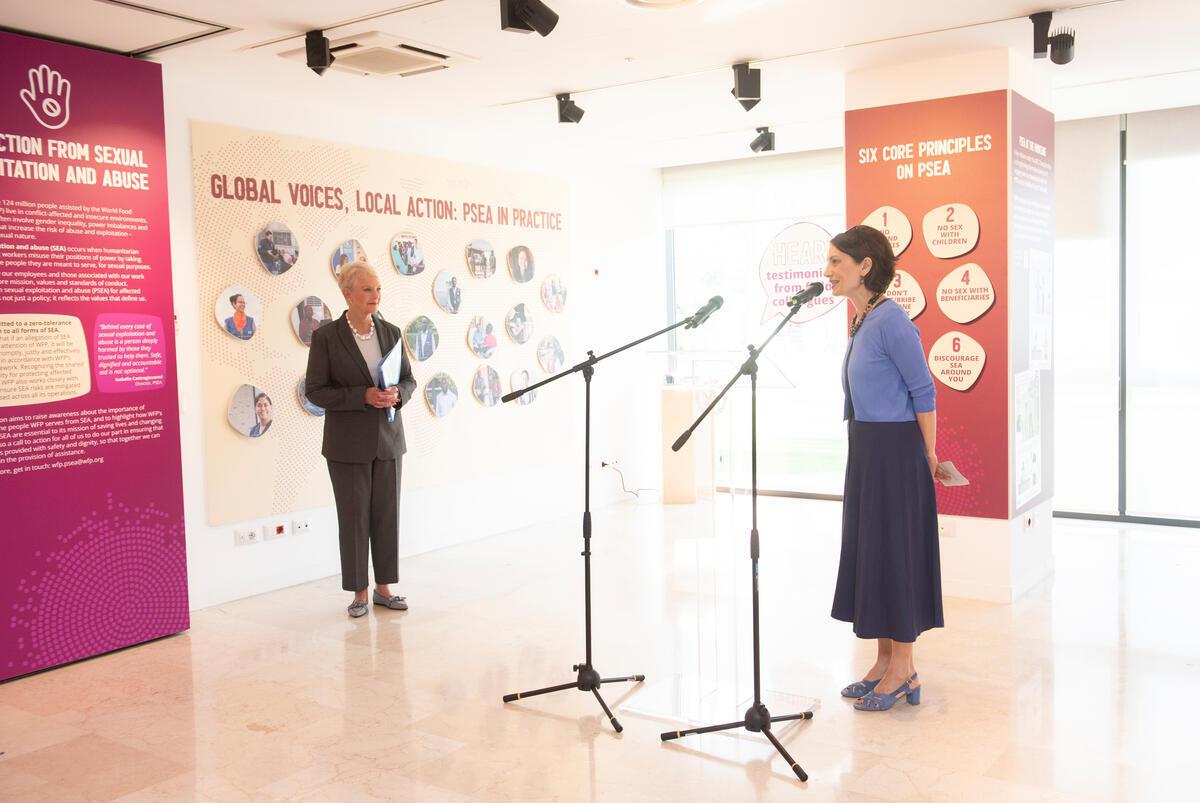
Launch of the exhibit “Ensuring safe and dignified access to food: WFP's protection from sexual exploitation and abuse journey”. In the photo Isabella Castrogiovanni, Director of the WFP’s PSEA Unit introduces the Executive Director, Cindy McCain. Photo: WFP/Daria Addabbo
Throughout the session, delegates had also the opportunity to visit the exhibit entitled Before disaster strikes: 10 Years of transforming humanitarian aid with Anticipatory Action in the Blue Foyer.
The exhibition celebrated a decade of WFP’s innovative efforts to act before crises strike, showcasing how this proactive approach has protected millions of lives and livelihoods across over 40 countries. Through interactive displays and case studies, the exhibit highlighted key achievements and the transformative potential of anticipatory action in an era marked by increasing climate-related disasters and humanitarian needs. It emphasized the cost-effectiveness and impact of early, coordinated interventions, demonstrating how anticipatory action strengthens resilience, improves efficiency, and fosters timely responses.

